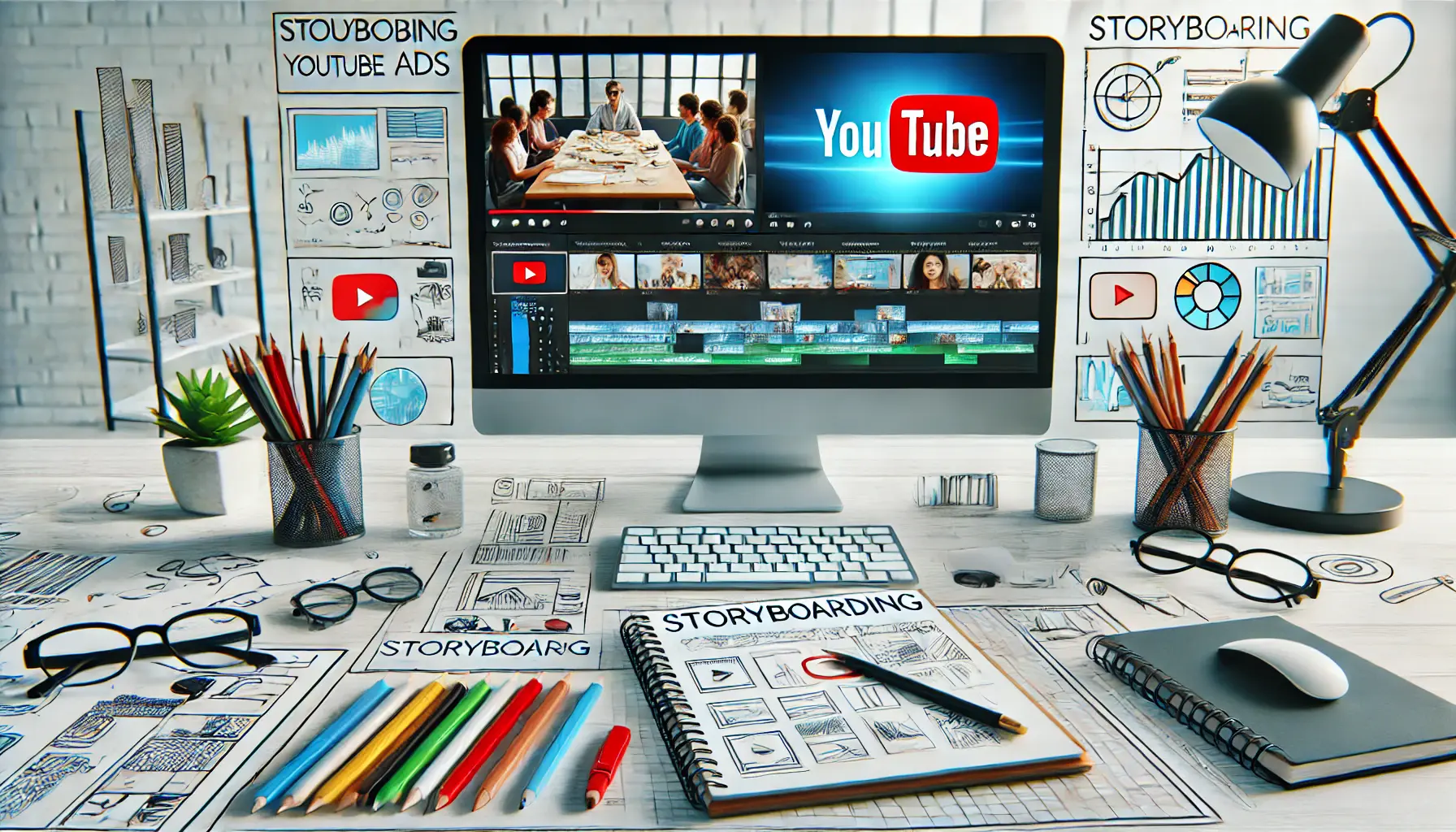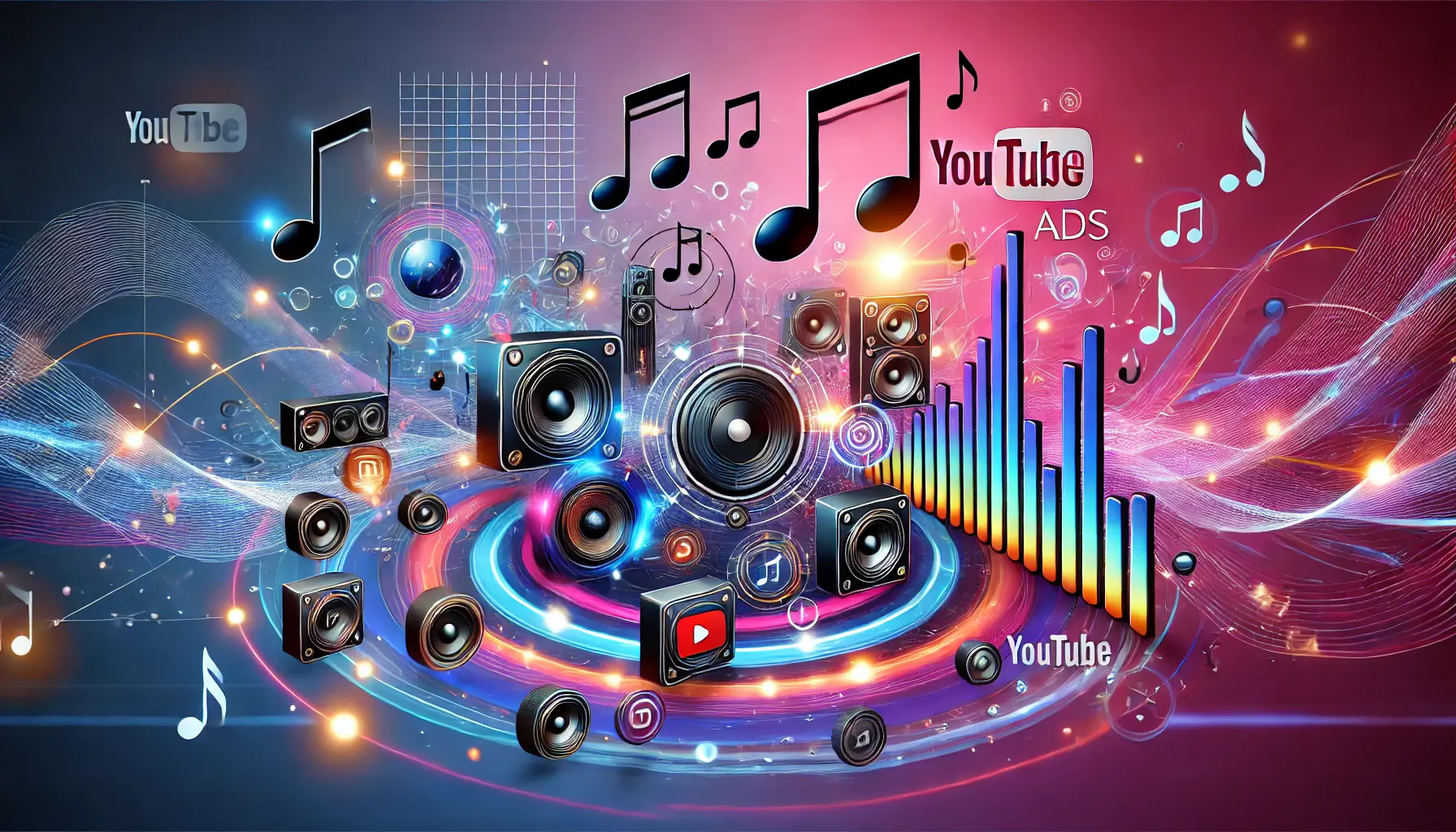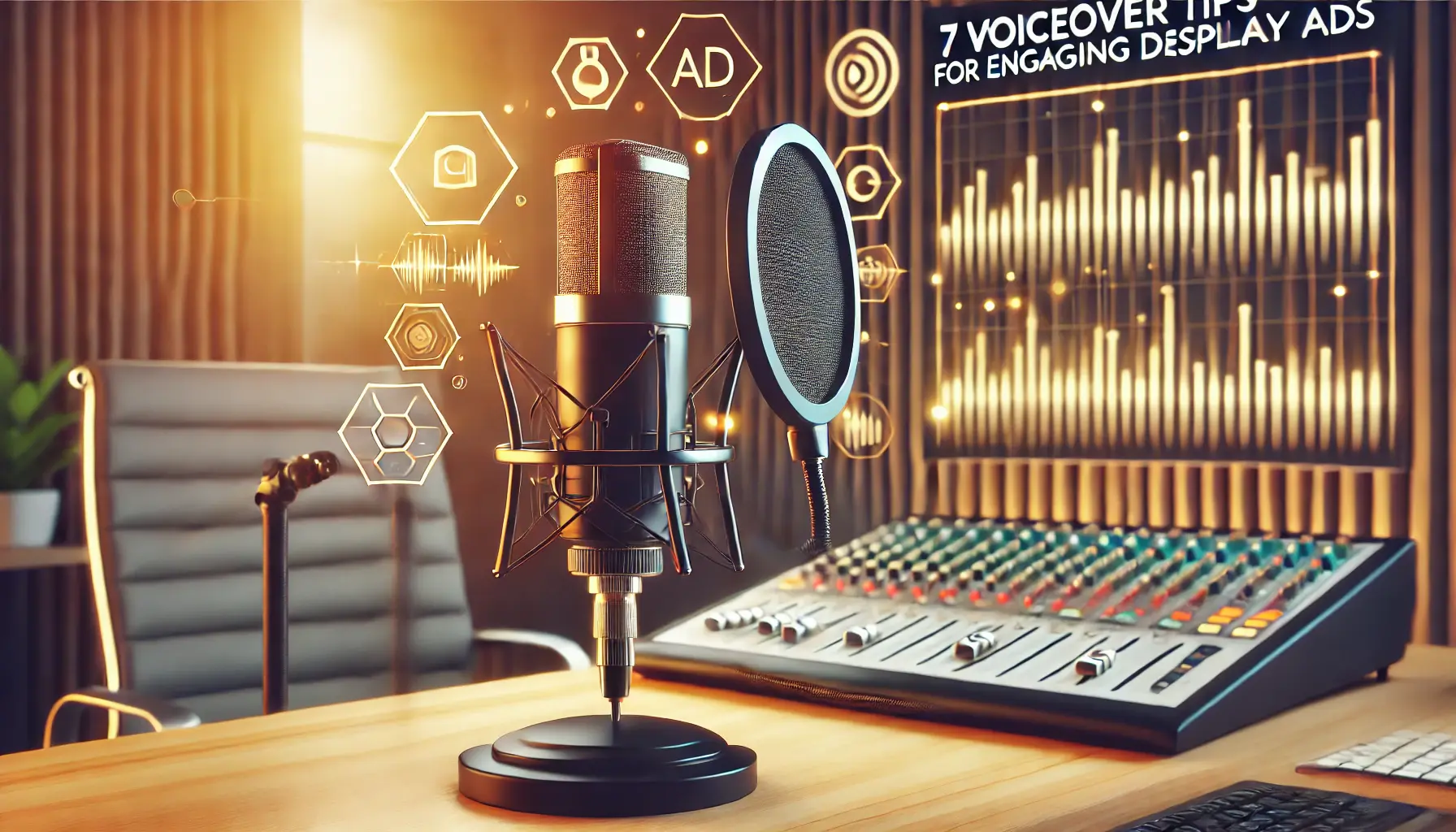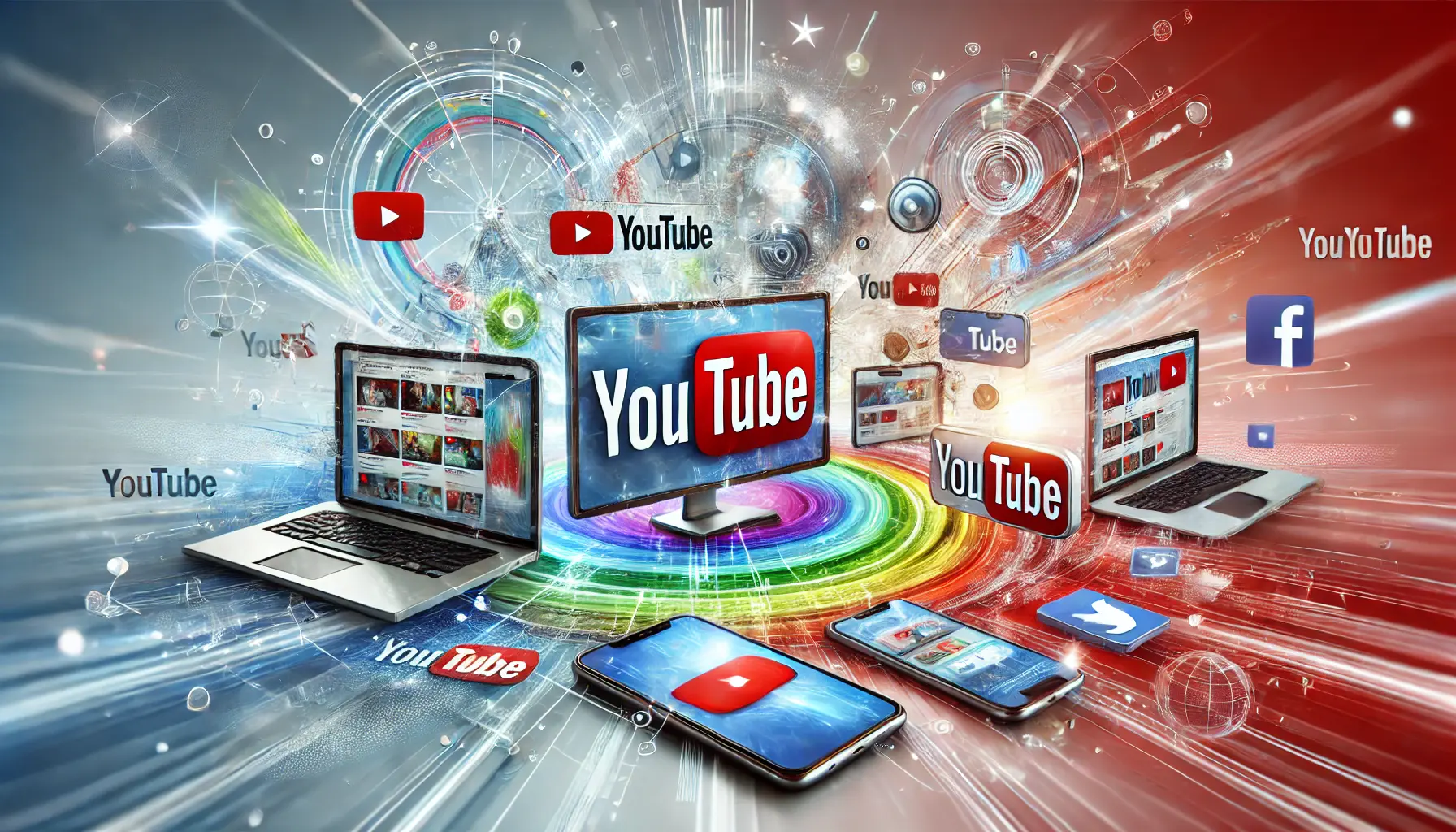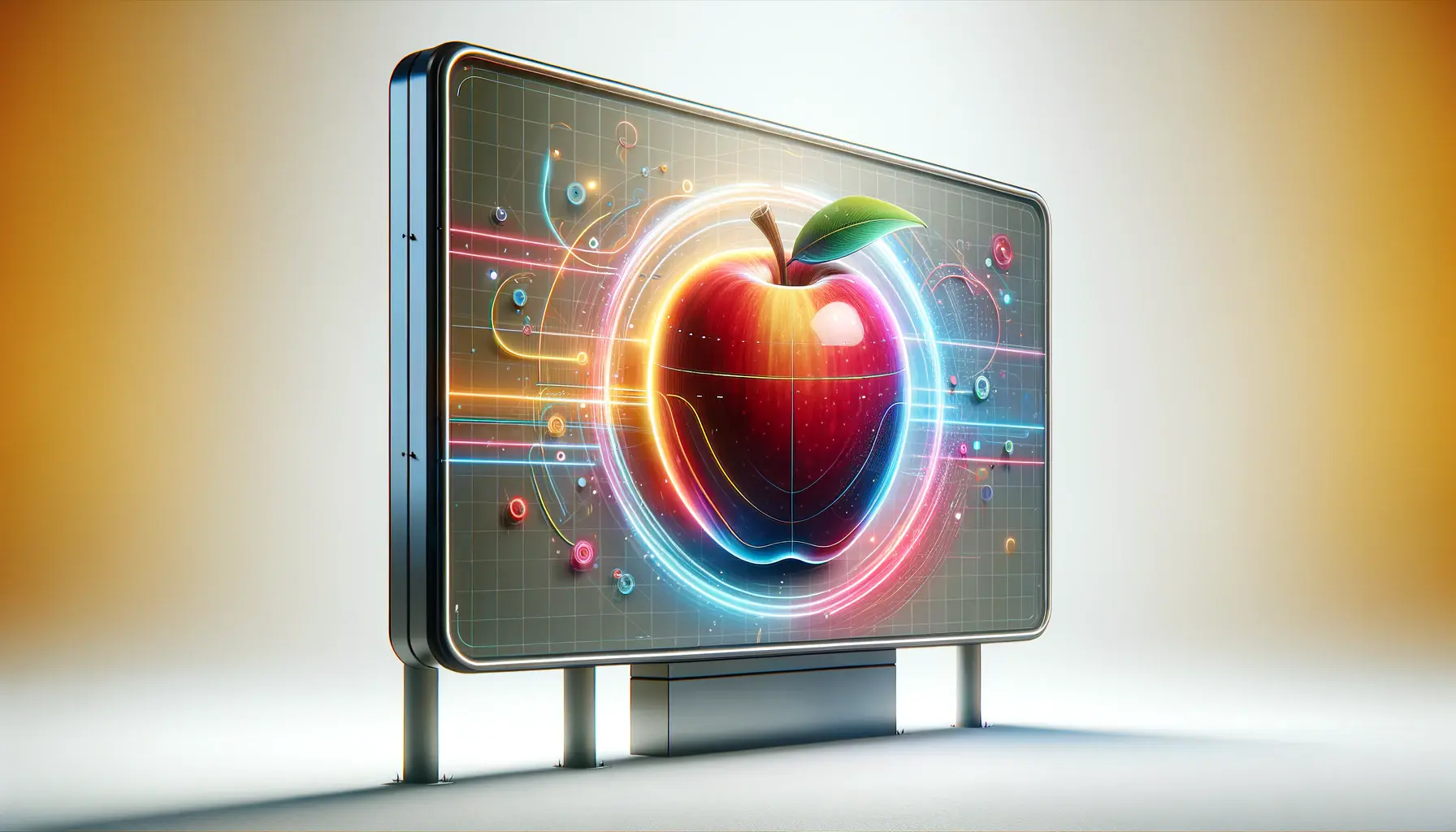In the realm of digital advertising, the process of creating effective YouTube ads goes beyond just visually appealing content.
A powerful voiceoverA narration or commentary provided off-camera or off-stage to convey a message. might be the difference between someone skipping your ad and actually watching it.
Voiceovers are the guiding voice of your brand through which clear and emotional communication of your message can be conveyed.
Whether running a product campaign or focusing on brand awareness, perfecting voiceover techniques is critical for success.
In this article, we’ll explore the most effective strategies to create voiceovers that leave a lasting impression.
- The Importance of Voiceovers in YouTube Ads
- Key Elements of an Effective Voiceover
- Top 7 Voiceover Techniques for High-Impact Ads
- Tools and Resources for Professional Voiceovers
- Measuring the Effectiveness of Voiceovers in Ads
- Mastering Voiceover Techniques for YouTube Ad Success
- Frequently Asked Questions About Voiceover Techniques for YouTube Ads
The Importance of Voiceovers in YouTube Ads
Voiceovers play a vital role in YouTube ads, helping bridge the gap between visuals and your audience’s understanding.
With millions of ads competing for attention, your voiceover needs to stand out, complement the visuals, and deliver a memorable experience.
But why are voiceovers so critical to the success of YouTube ads?
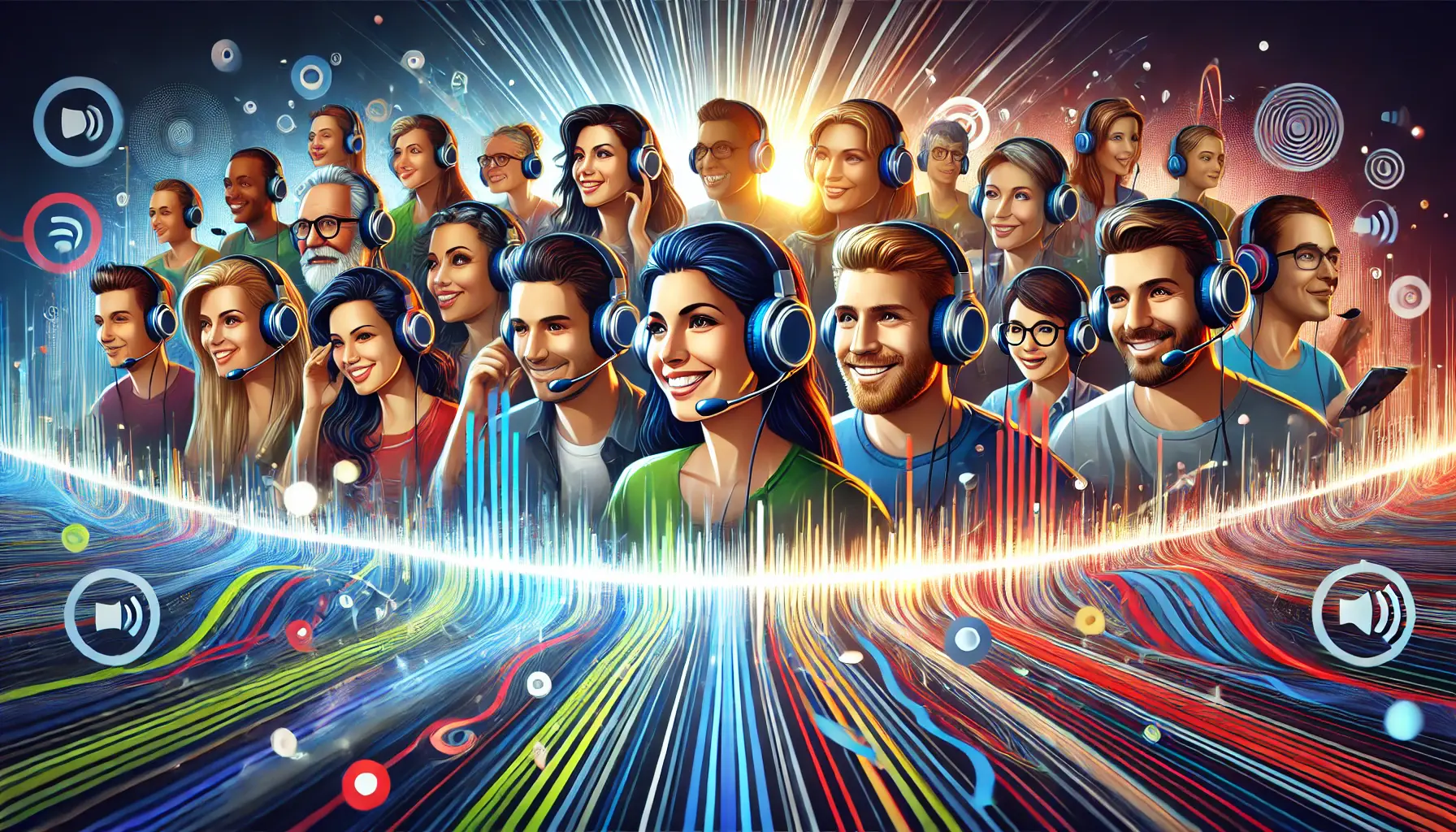
A visual representation of how voiceovers captivate and engage audiences.
How Voiceovers Enhance Viewer Engagement
Voiceovers work in several ways to engage an audience: they draw attention by creating a storyline that one can relate to.
While visuals are necessary, a well-developed voiceover ensures your message comes through, even when viewers are multitasking and unable to give the screen their full attention.
The voiceover is your narrator who leads your audience through the ad.
- They help explain complex ideas or demonstrate how products work quickly.
- They add personality and emotion, making ads more relatable.
- They ensure your message reaches viewers who might not be actively watching but are still listening.

undefined
Why Audio Quality Matters for Impact
Audio that sounds distorted or unclear can turn off a viewer instantly.
High-quality audio means instant credibility and professionalism.
Your voiceover should be recorded using top-notch equipment to ensure clarity and avoid distracting noises.
After all, poor audio quality can ruin even the most visually stunning ad.
- Invest in a good microphone and soundproof environment.
- Use editing tools to refine and balance the audio.
- Test your audio across different devices to ensure consistency.
By understanding the power of voiceovers and focusing on audio quality, you can lay a solid foundation for creating YouTube ads that engage and convert your audience.
Stay tuned as we dive deeper into what makes a voiceover truly effective in the next section.
Voiceovers bridge the gap between visuals and audience understanding, delivering a memorable experience. A strong voiceover ensures your message is heard even in multitasking scenarios.
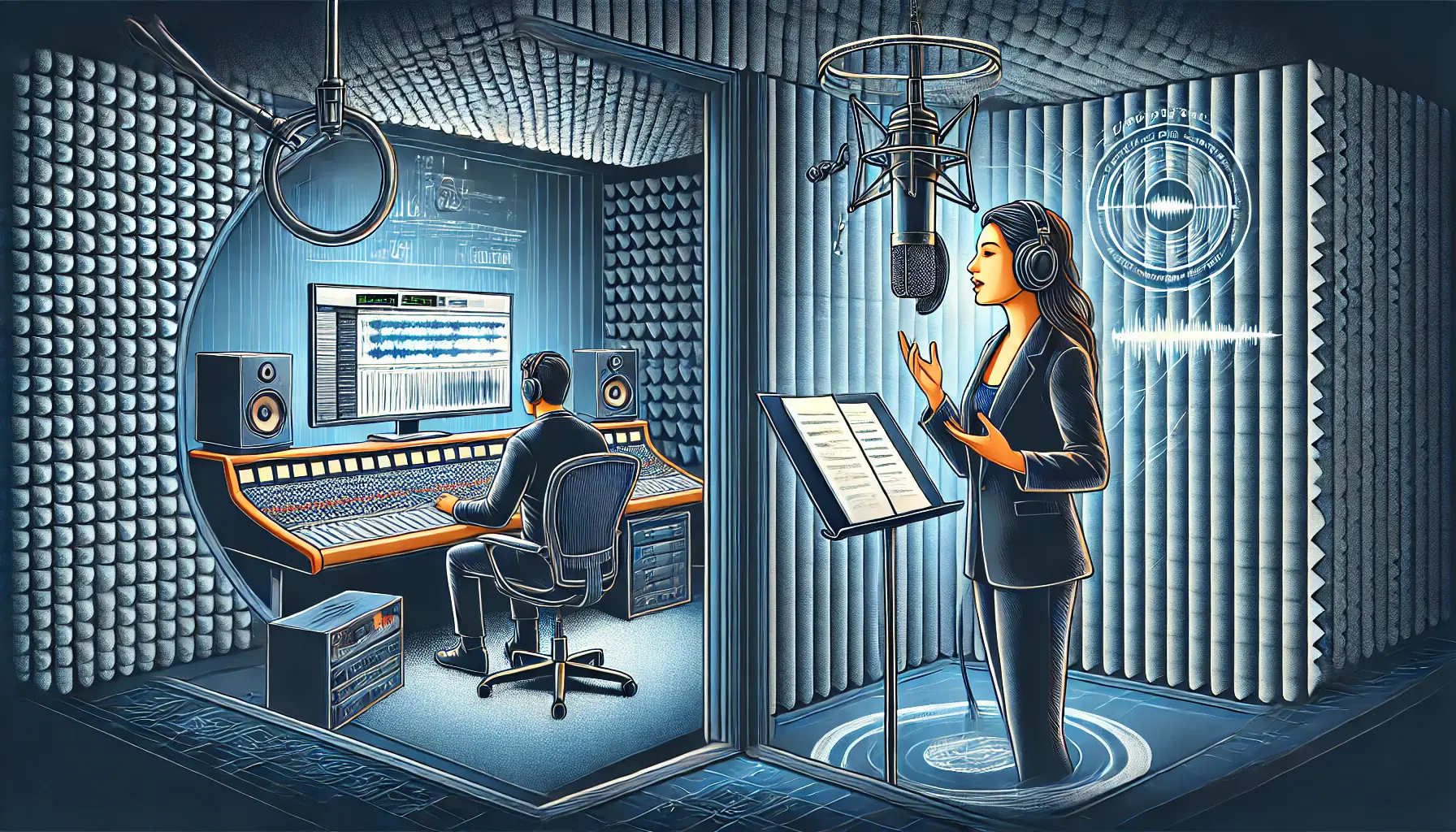
A professional setup showcasing the critical elements of an effective voiceover.
Key Elements of an Effective Voiceover
Creating an impactful voiceover for YouTube ads requires careful attention to several key elements.
The right approach can ensure your message resonates with your audience and leaves a lasting impression.
From selecting the perfect voice to balancing tone and pacing, every detail matters when crafting a voiceover that elevates your ad campaign.

The thoughtful process of selecting the perfect voice to connect with diverse audiences.
Choosing the Right Voice for Your Audience
The voice you choose sets the tone for your ad and helps define the personality of your brand.
It’s important to select a voice that resonates with your target audience and the message you’re communicating.
For instance, you might want to use a youthful, energetic voice for a younger audience, while a calm and professional voice may work better for professional audiences.
- Understand your audience’s preferences and expectations.
- Decide if a male, female, or even a child’s voice is most appropriate.
- Consider hiring a professional voice actor for authenticity and polish.
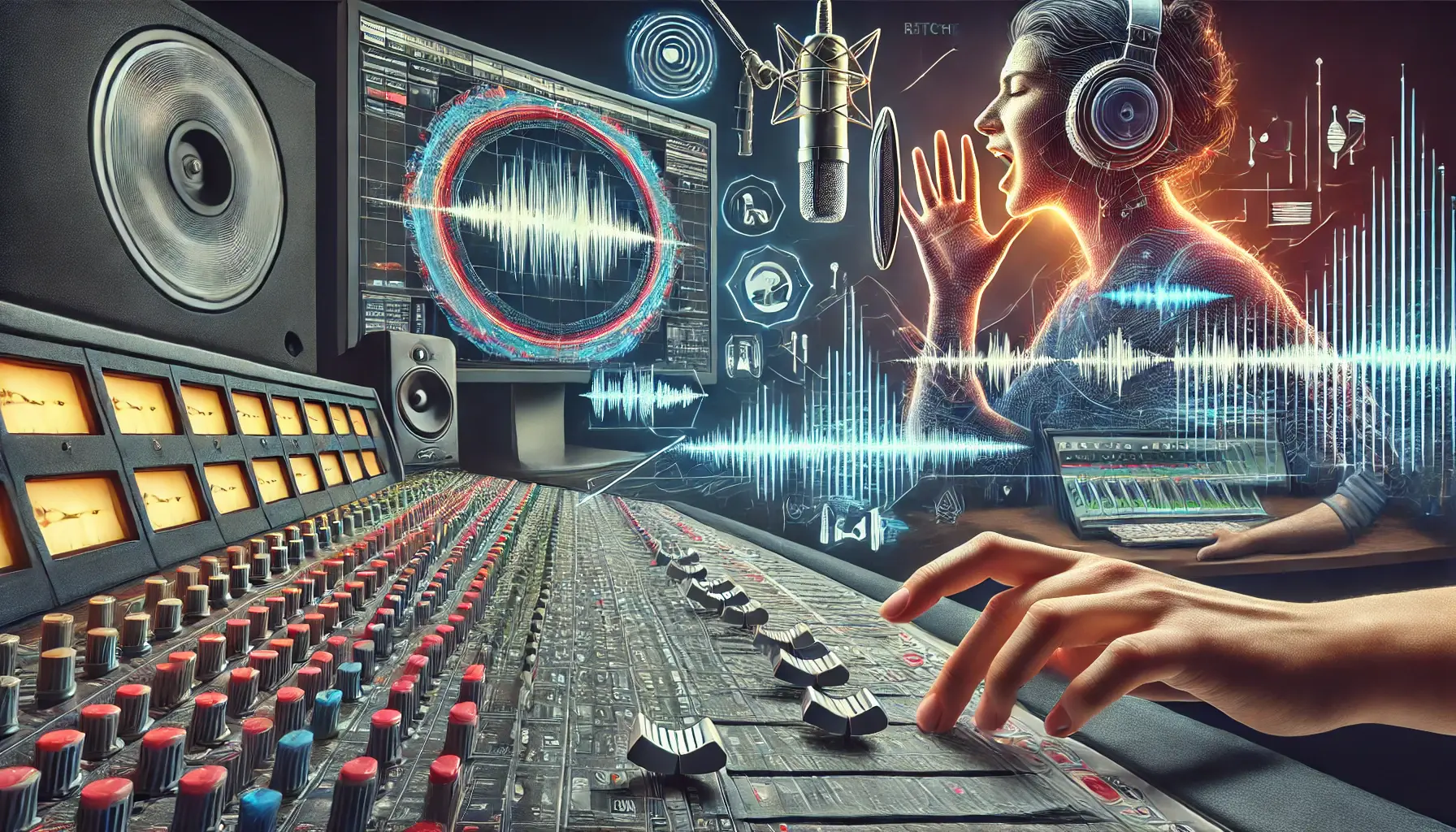
The harmony of tone, pitch, and pacing in creating impactful voiceovers.
Balancing Tone, Pitch, and Pacing
An effective voiceover maintains a balance between tone, pitch, and pacing to keep viewers engaged.
Your tone should match the ad’s mood—whether it’s upbeat, serious, or emotional—while the pitch and pacing should make the message easy to understand and follow.
- Match the tone to the emotional goal of your ad (e.g., inspiring, informative, or persuasive).
- Use a pitch that is natural and pleasant to listen to, avoiding monotony.
- Maintain a steady pace that ensures clarity but doesn’t drag or feel rushed.
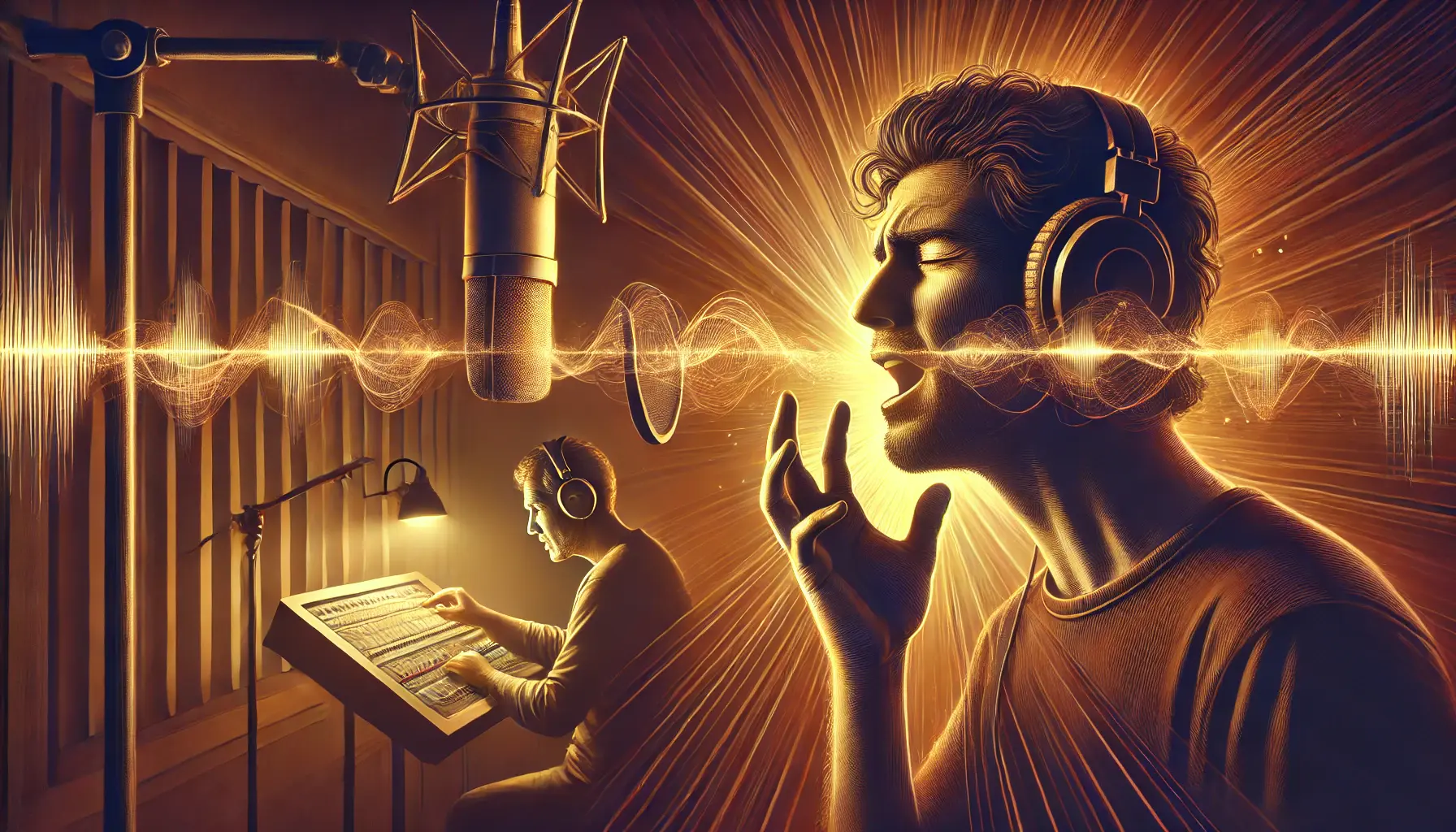
Capturing the emotional connection between voiceovers and their audience.
Using Emotion to Connect with Viewers
Emotion is a powerful tool in advertising, and voiceovers are no exception.
A voiceover that conveys genuine emotion can create a stronger connection with your audience and enhance the overall impact of your ad.
- Focus on key emotional triggers like joy, trust, or urgency.
- Use subtle voice inflections to emphasize important points.
- Avoid overacting; authenticity is key to connecting with viewers.

Correcting voiceover mistakes in a professional studio environment.
Avoiding Common Voiceover Mistakes
Even the best ad concepts can fall victim to poor voiceover execution.
Common mistakes such as an inconsistent tone, mispronunciations, or overly scripted delivery can distract viewers and diminish the effectiveness of your ad.
- Ensure the voiceover is in sync with both the visuals and the message.
- Practice clear enunciation to ensure the message is easily understood.
- Maintain naturalness and spontaneity, avoiding artificial or forced inflections.
By focusing on these elements, you can create a voiceover that complements your visuals and amplifies your message, ensuring your YouTube ads stand out and achieve their desired impact.
Choosing the right voice, balancing tone and pacing, and incorporating emotion are crucial for creating impactful voiceovers that resonate with your audience.
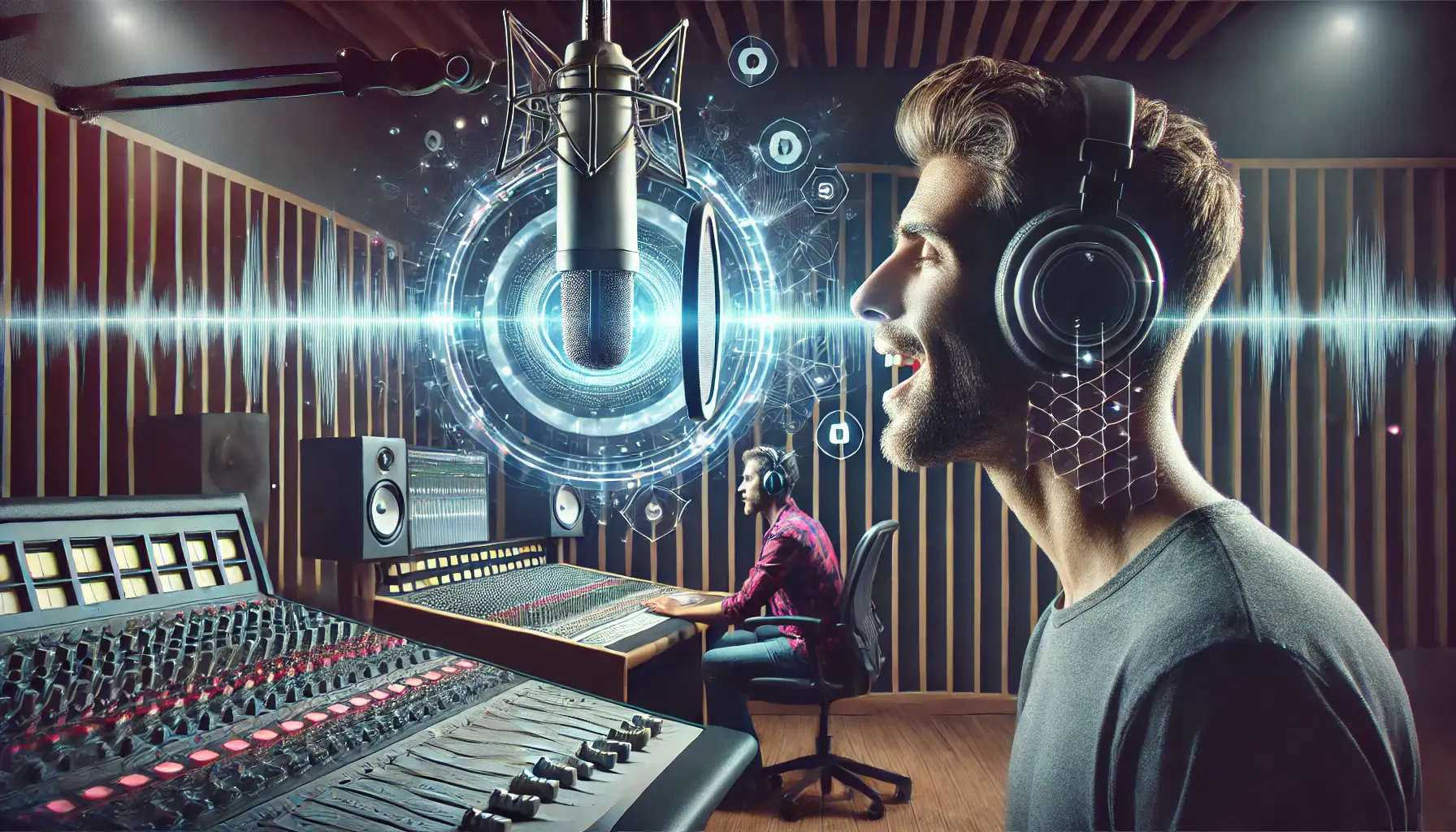
A professional studio setup for high-impact voiceover techniques.
Top 7 Voiceover Techniques for High-Impact Ads
When it comes to creating effective YouTube ads, mastering voiceover techniques is essential.
These techniques ensure that your message resonates with your audience, holds their attention, and drives them to take action.
Whether you’re targeting a local audience or a global market, implementing these top voiceover techniques can significantly enhance the impact of your ads.

undefined
1. Tailoring the Script for Voice Impact
A good voiceover originates from a well-constructed script.
The script must be targeted towards the tone and style of your advertisement to engage the audience.
The language should be simple, concise, and powerful.
- Make use of language that is crystal clear, easily understandable, and corresponds to your brand.
- Use short sentences to ensure continuity without overwhelming the listener.
- Include natural pauses for easier delivery and proper emphasis.

Mastering voice inflection and intonation for a dynamic voiceover.
2. Mastering Voice Inflection and Intonation
Voice inflectionThe modulation or variation of pitch in speech to convey meaning or emotion. and intonationThe rise and fall of the voice in speaking, crucial for conveying emotion and emphasis. bring life to your message.
They emphasize key points and help convey emotion effectively.
A monotone voice can make even the most exciting content sound dull, so variation is crucial.
- Emphasize important words to highlight the core message.
- Use rising and falling intonations to maintain listener interest.
- Avoid over-exaggeration; it can sound unnatural and take away from the message.
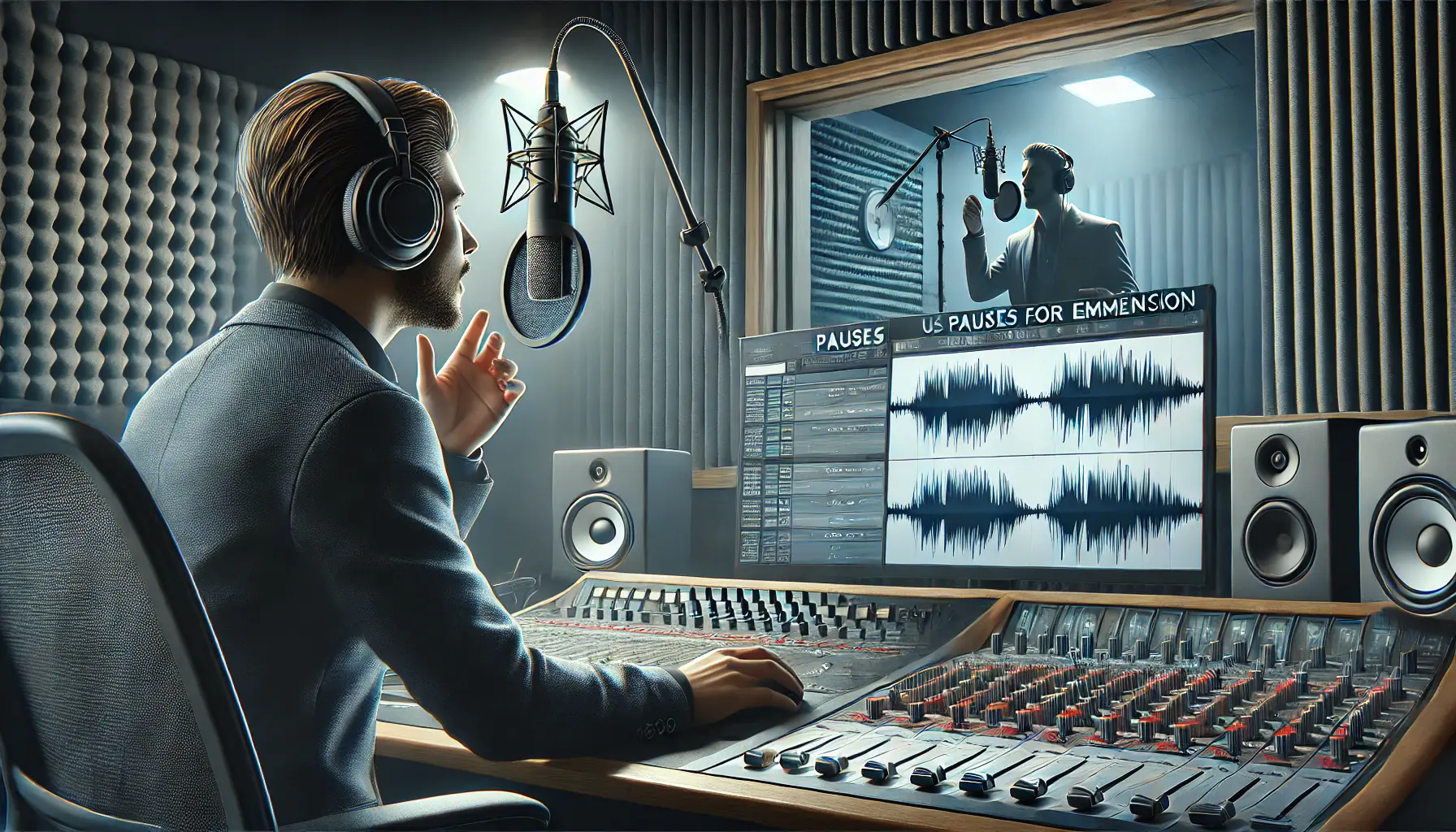
Using strategic pauses for emphasis in voiceover recording.
3. Strategic Use of Pauses for Emphasis
Pauses are a powerful tool in voiceovers.
They give the audience time to process information and create dramatic effects when used correctly.
- Pause after delivering critical points to let the message sink in.
- Avoid overly long pauses that might break the rhythm of the ad.
- Practice timing to ensure pauses feel natural and intentional.

Maintaining a conversational tone for a natural and engaging voiceover.
4. Maintaining a Conversational Tone
Audiences respond better to ads that feel relatable and authentic.
A conversational tone helps establish a personal connection and makes the ad feel less like a sales pitch.
- Speak naturally, as if talking to a friend or colleague.
- Avoid overly formal language unless it suits your audience.
- Use contractions and colloquial expressions where appropriate.
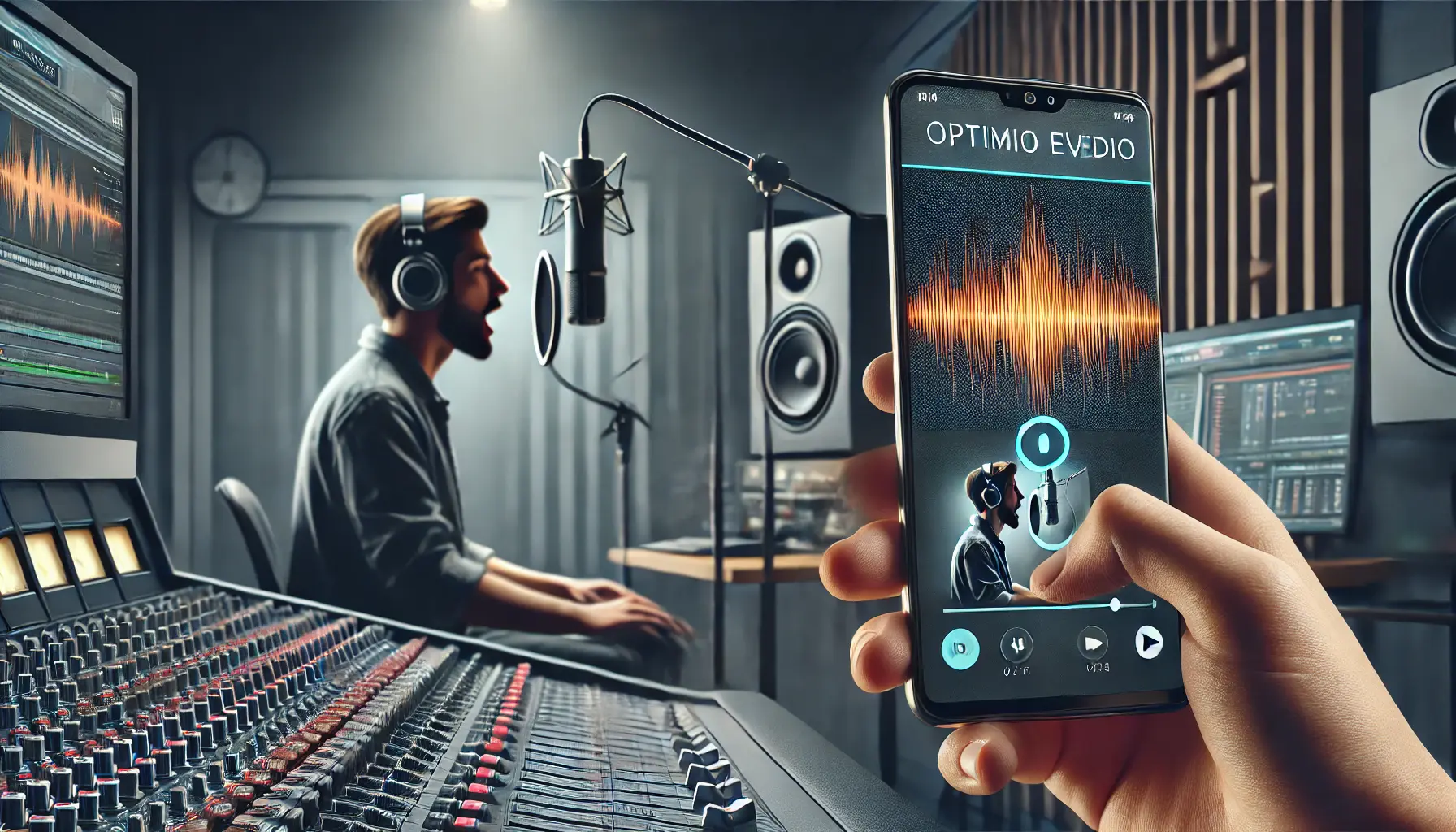
Optimizing voiceovers for mobile viewers’ audio clarity.
5. Optimizing for Mobile Viewers’ Audio
Most YouTube content is consumed on mobile devices.
Optimizing your voiceover for smaller speakers and varying audio environments ensures your message reaches your audience effectively.
- Ensure the voiceover is clear and audible on mobile devices.
- Test your audio on different devices to identify potential issues.
- Balance background music and voice to avoid overpowering.
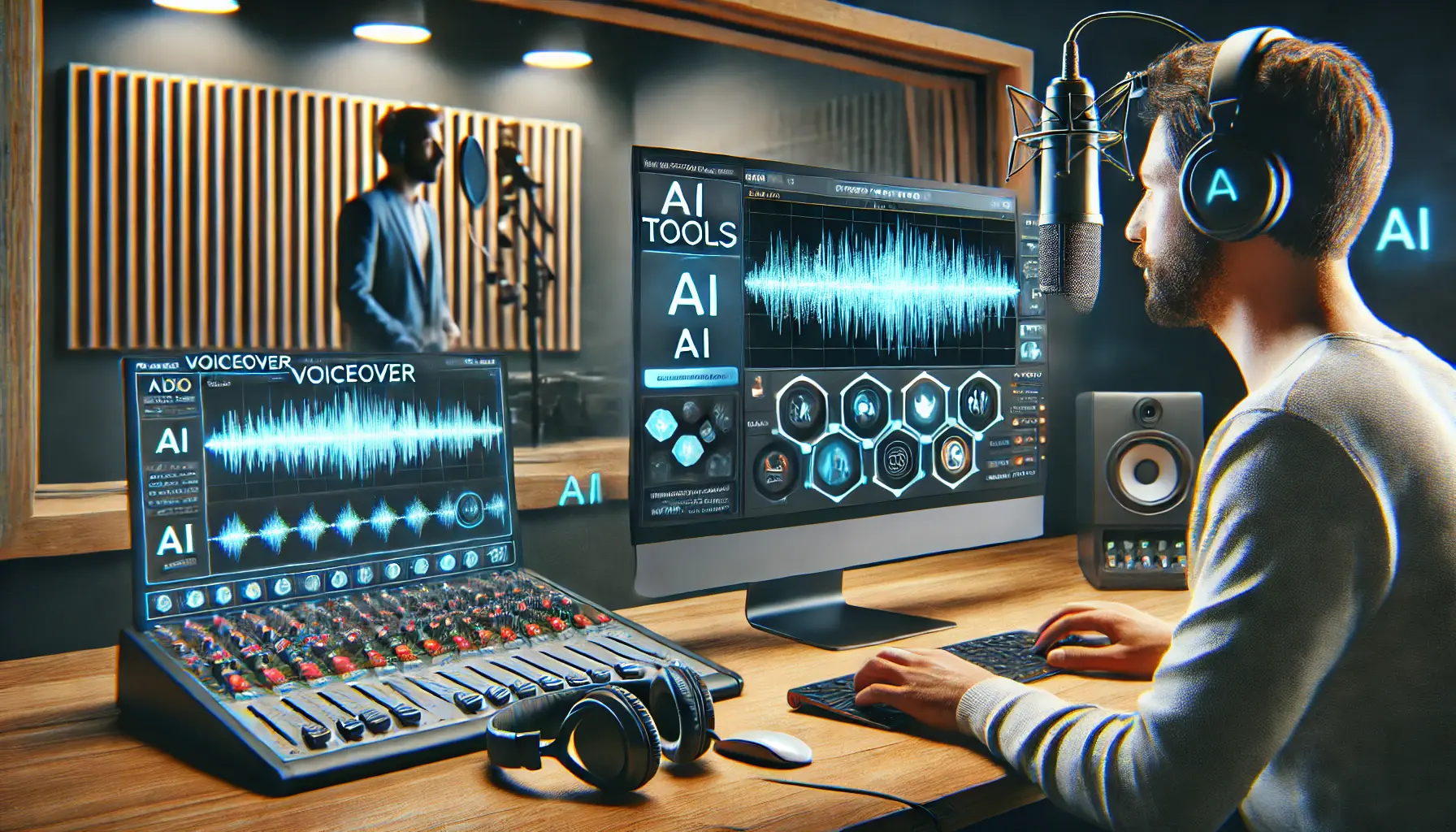
Using AI tools to enhance and refine voiceover recordings.
6. Leveraging AI Tools for Voiceover Refinement
AI tools have revolutionized voiceovers by offering editing, enhancement, and even voice generation capabilities.
These tools help refine your audio and save time in production.
- Use AI tools to adjust tone, pitch, and pacing as needed.
- Experiment with synthetic voices for multilingual ads.
- Automate basic editing tasks to improve efficiency.
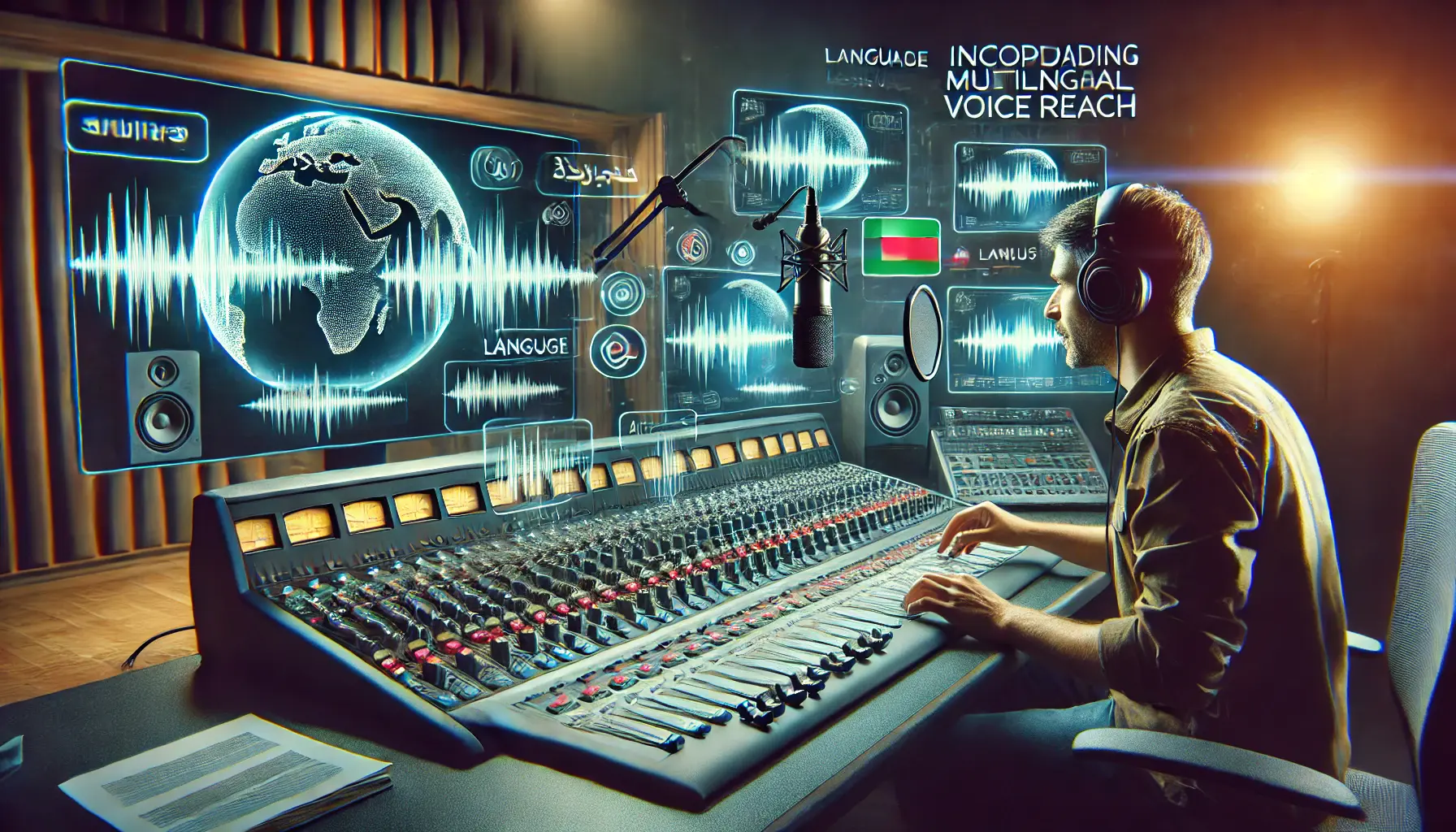
undefined
7. Incorporating Multilingual Voiceovers for Global Reach
To expand your reach, create multilingual voiceovers for your ads.
Localize your message to ensure it resonates with diverse audiences worldwide.
- Hire native speakers to maintain authenticity in different languages.
- Adapt the script to cultural nuances for each market.
- Use professional translation services to ensure accuracy.
By applying these methods of voiceover, your YouTube advertisements will catch people’s attention and stimulate viewers to take action, making your campaigns far more effective and successful.
From mastering voice inflection to leveraging AI tools and tailoring scripts, these techniques can significantly boost the effectiveness of your YouTube ads.
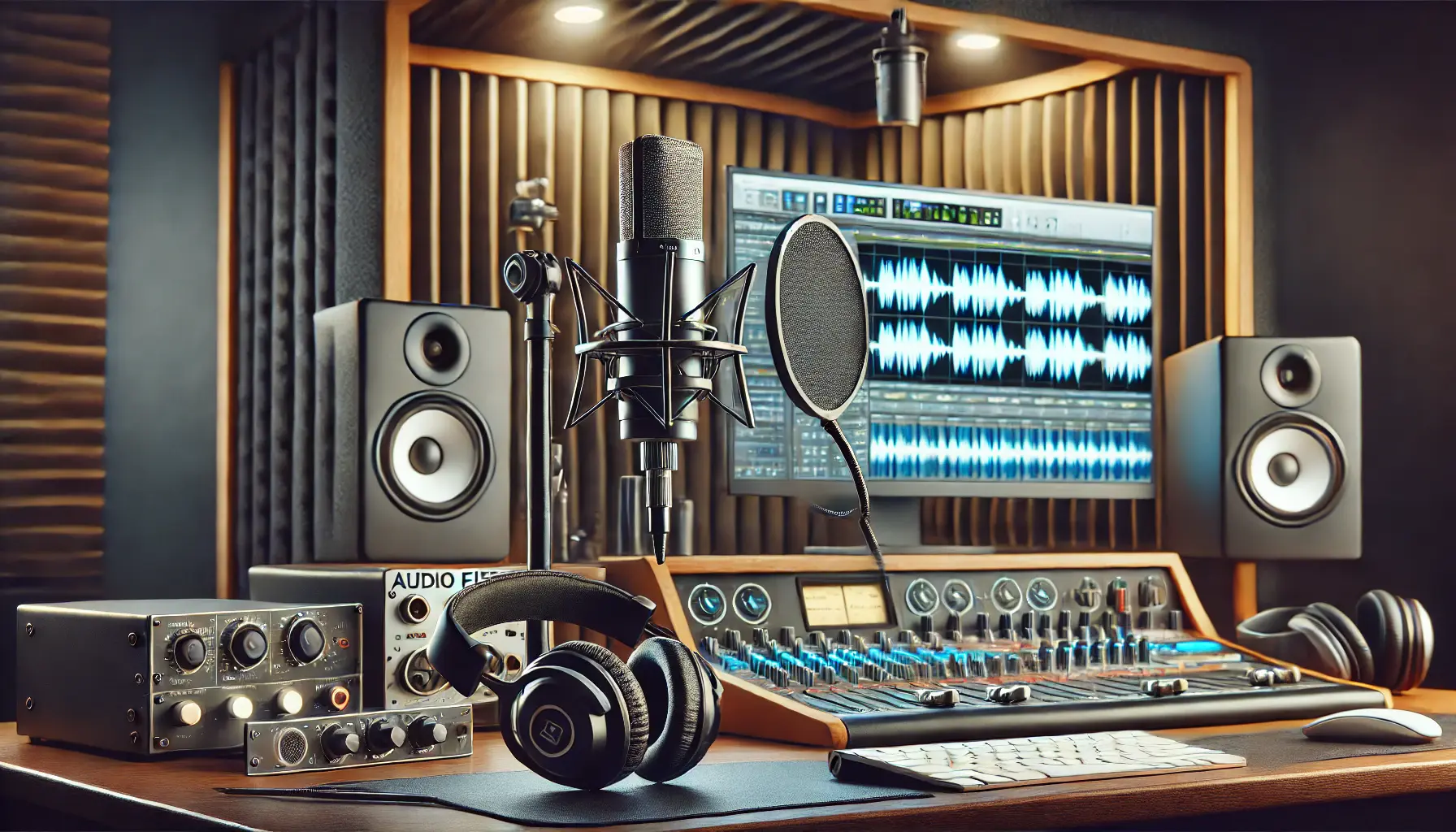
Essential tools and resources for professional voiceover production.
Tools and Resources for Professional Voiceovers
Creating professional voiceovers for YouTube ads requires the right tools and resources.
From recording equipment to software, having the best tools at your disposal ensures that your voiceovers are clear, engaging, and high-quality.
Additionally, accessing the right talent and platforms can elevate your ad campaign to new heights.
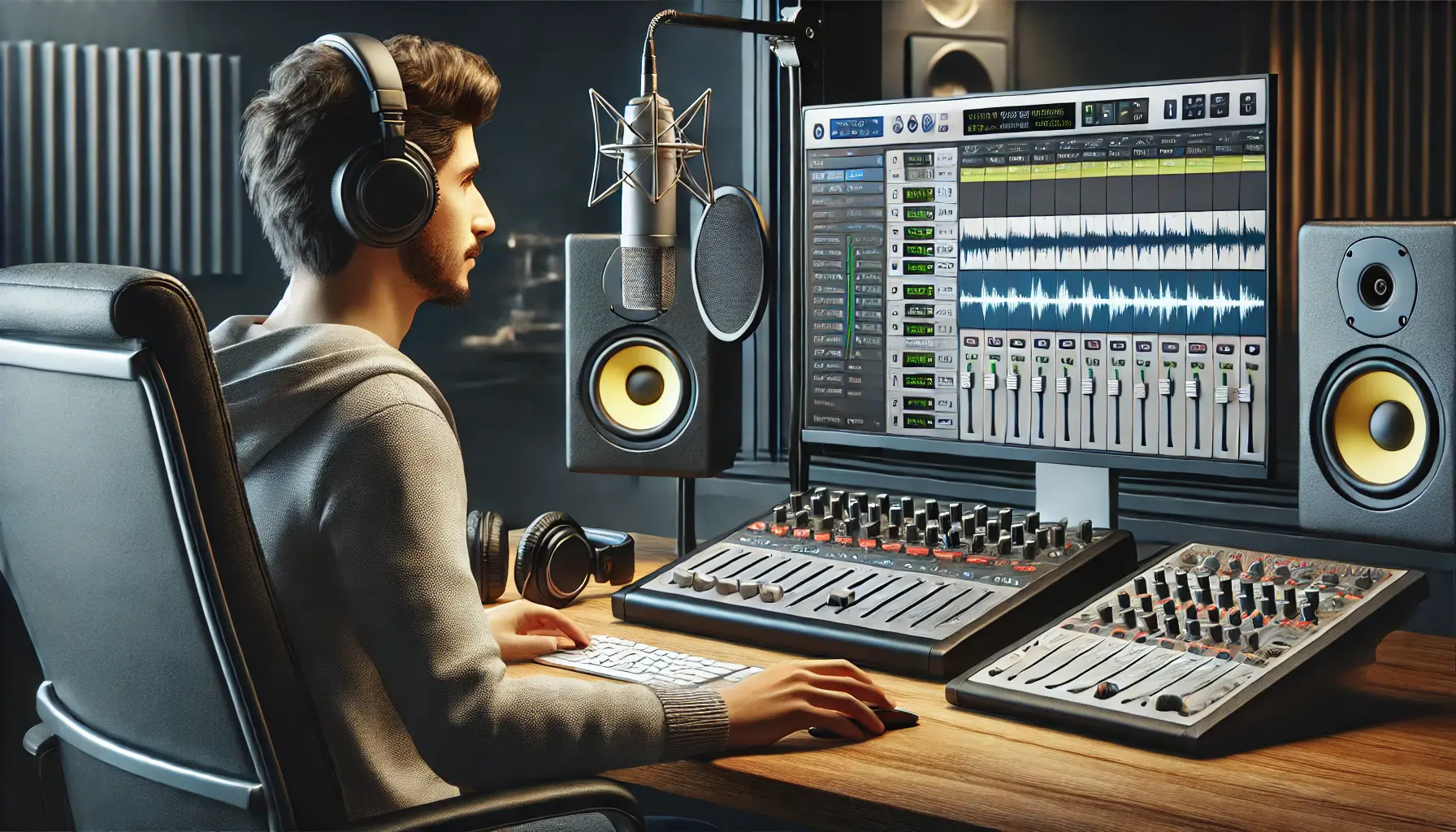
Using professional software to record and edit high-quality voiceovers.
Best Software for Recording Voiceovers
The right recording software is essential for creating high-quality voiceovers.
Modern software offers features like noise reduction, equalization, and multi-track editing, which are crucial for refining your recordings.
- Audacity: A free, open-source tool ideal for beginners and professionals alike. It offers robust editing features and supports multiple file formats.
- Adobe Audition: A professional-grade tool with advanced features, including spectral analysis, noise removal, and audio restoration.
- GarageBand: A beginner-friendly tool for Mac users that offers easy-to-use recording and editing features.
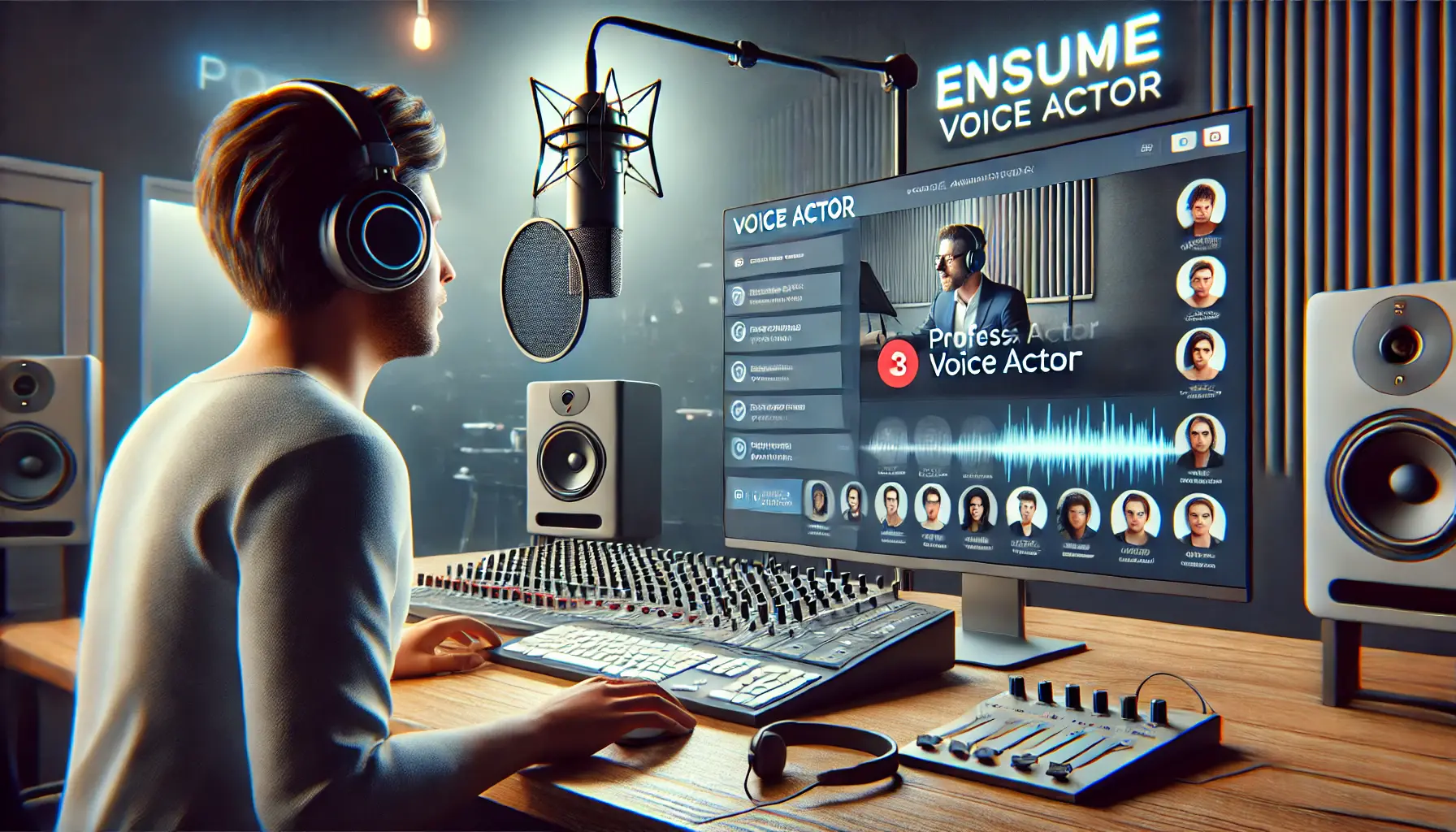
Finding and hiring professional voice actors online for voiceover projects.
Finding Professional Voice Actors Online
If you’re looking for high-quality voiceover talent, several online platforms connect you with skilled voice actors who can bring your scripts to life.
- Voices.com: One of the largest marketplaces for hiring professional voice actors across various languages and accents.
- Fiverr: A budget-friendly platform with a vast range of freelance voiceover artists available for projects of any scale.
- Bunny Studio: A dependable service with pre-screened professionals offering voiceovers, ensuring quality and speed.
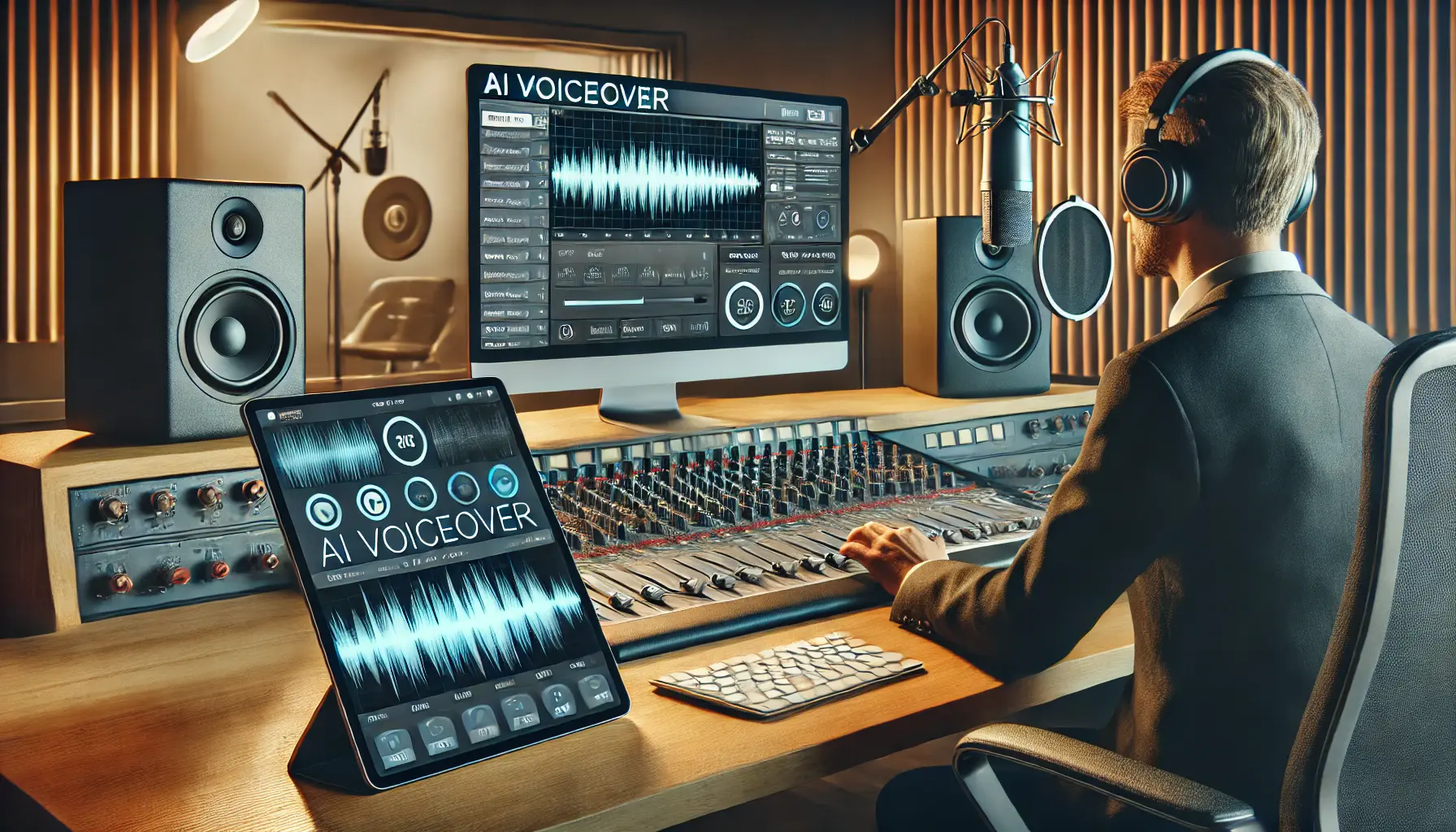
Exploring the use of AI voiceover tools in a professional studio environment.
Pros and Cons of AI Voiceover Tools
The cost and efficiency of AI-based voiceover tools make them increasingly popular.
However, they come with their own set of advantages and limitations.
- Pros: Cost-effective, quick production, and availability of multiple languages and tones.
- Cons: Lack of emotional depth and authenticity compared to human voiceovers.
- Examples: Tools like Murf AI, Descript, and Resemble AI for creating AI-generated voiceovers.

undefined
Microphone and Equipment Recommendations
Investing in the right equipment is vital for producing professional-quality voiceovers.
A good microphone and accessories ensure that your recordings are free from noise and distortion.
- Microphones: Consider options like the Shure SM7B, Audio-Technica AT2020, or Blue Yeti for crystal-clear audio.
- Pop Filters: Reduce plosive sounds and improve audio quality with affordable pop filters.
- Audio Interfaces: Use devices like the Focusrite Scarlett series to connect microphones to your computer for enhanced audio fidelity.
By leveraging these tools and resources, you can create professional-grade voiceovers that captivate your audience and give your YouTube ads the boost they need.
Finding the right mix of talent, technology, and equipment will determine the success of your ads in the competitive digital landscape.
Investing in quality equipment like microphones and using platforms like Voices.com or software like Adobe Audition ensures professional-grade voiceovers.

Measuring the impact of voiceovers in ads using performance data and analytics.
Measuring the Effectiveness of Voiceovers in Ads
Creating a compelling voiceover is only part of the process.
To ensure your YouTube ads achieve their intended impact, it’s crucial to measure the effectiveness of your voiceovers.
By analyzing performance metrics and gathering audience feedback, you can refine your approach and maximize your ad’s success.
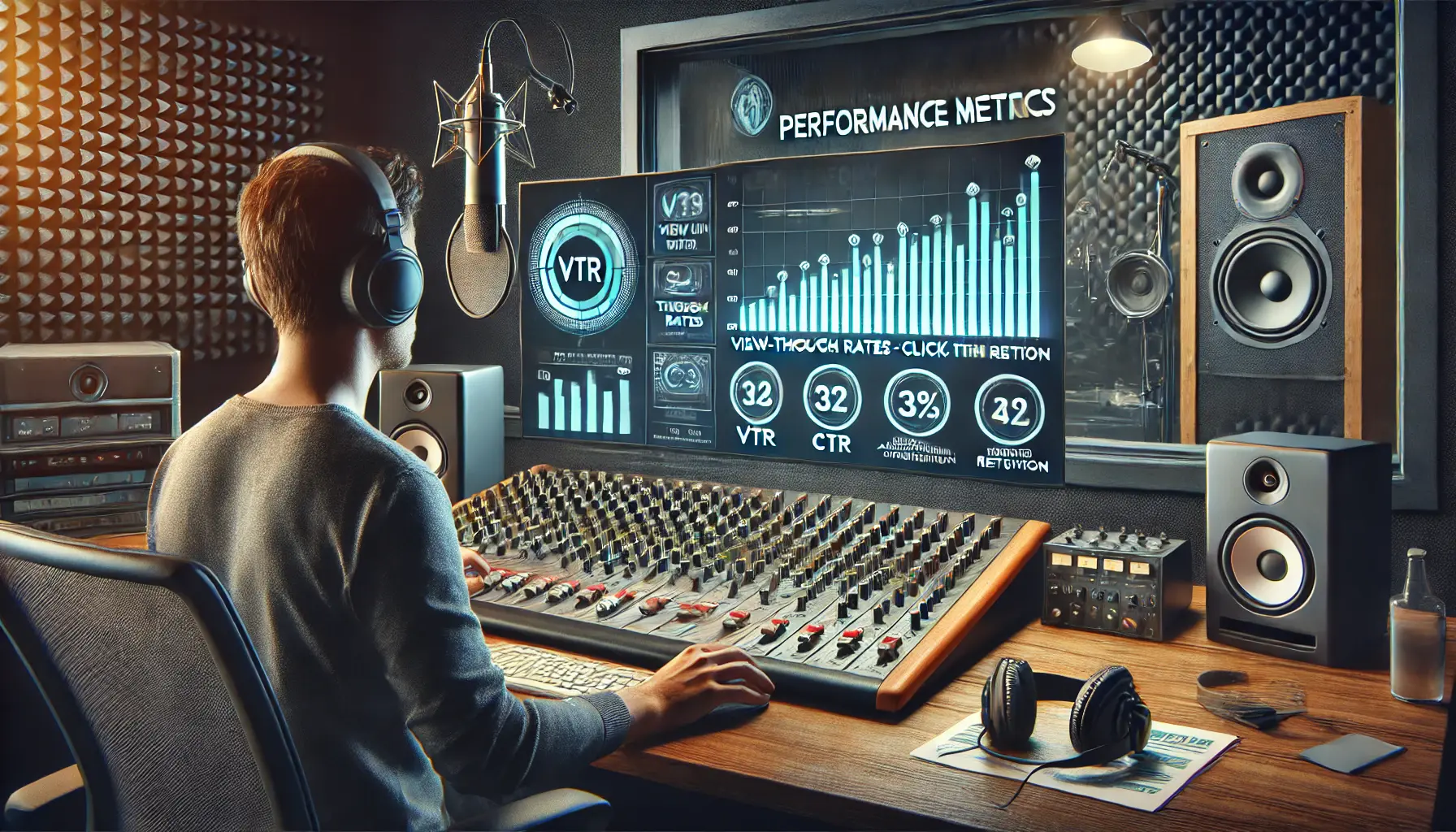
undefined
Key Metrics to Track Voiceover Performance
Tracking the right metrics helps determine how well your voiceovers are resonating with your audience.
These insights provide actionable data for future improvements.
- View-Through Rate (VTR): Measures how many viewers watched your ad to completion, indicating engagement levels.
- Click-Through Rate (CTR): Tracks the percentage of viewers who clicked on your ad, reflecting its effectiveness in driving action.
- Audience Retention: Analyzes how long viewers stay engaged with your ad, highlighting areas where your voiceover may lose impact.
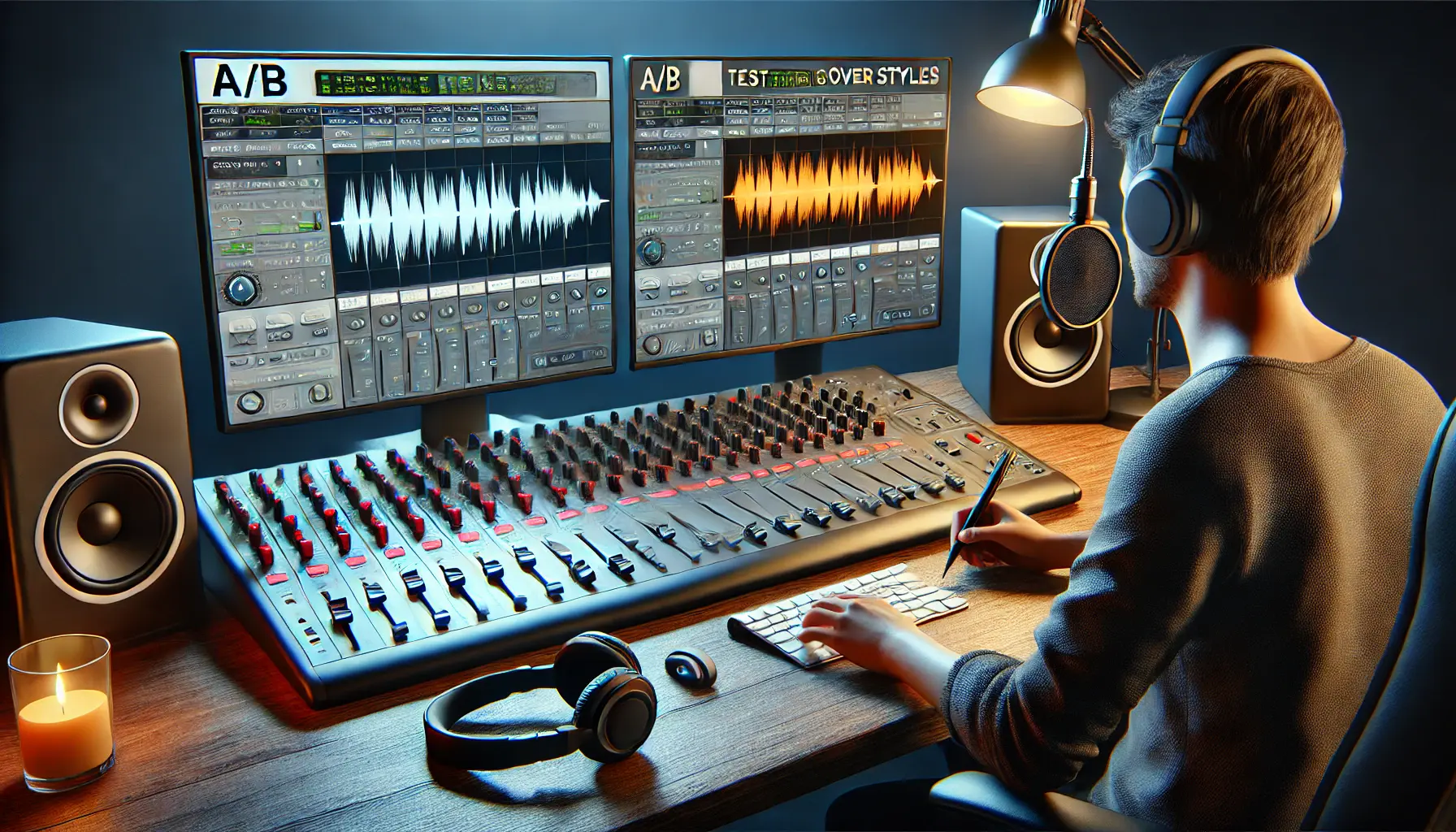
Using A/B testing to compare and optimize voiceover styles for better performance.
A/B Testing Voiceover Styles for Better Results
A/B testing involves comparing two versions of an ad with different voiceover styles to see which performs better.
This method helps identify the tone, pacing, and delivery that best connects with your audience.
- Test different tones (e.g., authoritative vs. conversational) to see which resonates more.
- Experiment with varied pacing to find the optimal delivery speed.
- Use different voice talents to evaluate which voice generates the strongest response.

Refining voiceovers based on audience feedback to improve performance.
Using Viewer Feedback to Refine Your Approach
Audience feedback is invaluable for improving your voiceovers.
It provides direct insights into what works and what doesn’t from the perspective of your target viewers.
- Monitor comments and reviews on your ad to identify patterns in audience reactions.
- Conduct surveys or polls to gather specific feedback on voiceover elements like tone and clarity.
- Incorporate constructive criticism to refine your approach in future campaigns.
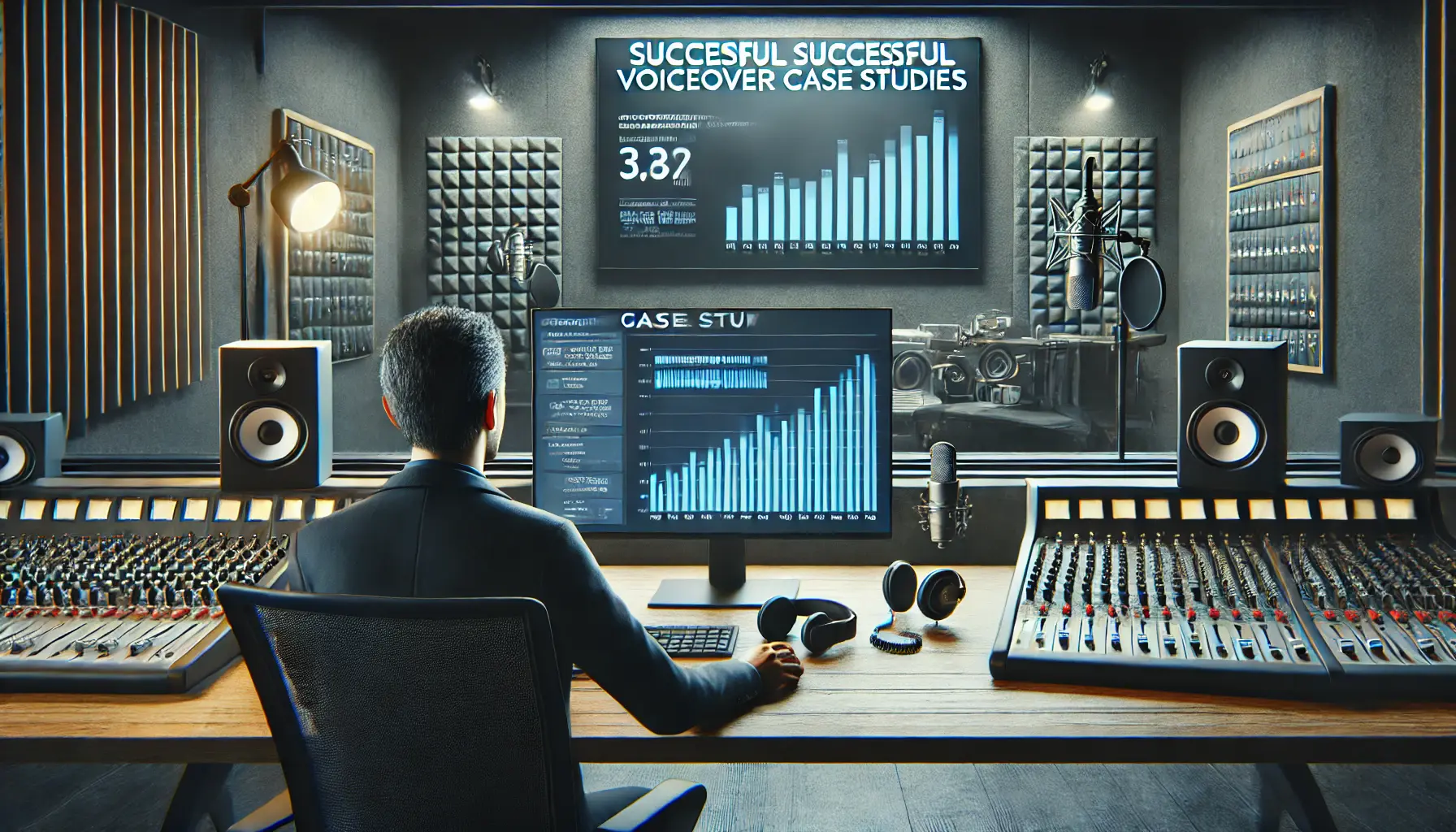
Reviewing real-life case studies to understand the success of voiceover campaigns.
Real-Life Case Studies of Voiceover Success
Examining successful ad campaigns can offer valuable lessons on leveraging voiceovers effectively.
Real-world examples provide a roadmap for implementing proven strategies.
- Brand A: Increased audience engagement by switching to a conversational tone that matched their target demographic.
- Brand B: Improved CTR with the use of a professional voice actor with a warm and inviting tone.
- Brand C: Boosted VTR through A/B testing and refining their voiceover style based on viewer data.
By measuring the effectiveness of your voiceovers using these strategies, you can ensure your YouTube ads deliver maximum impact.
Continuously analyzing performance and iterating based on feedback will help your campaigns stay relevant and successful in an ever-changing digital landscape.
Track metrics like View-Through Rate (VTR), Click-Through Rate (CTR), and audience retention. Use A/B testingA method of comparing two versions of a creative to determine which performs better. and feedback to refine voiceovers for better results.
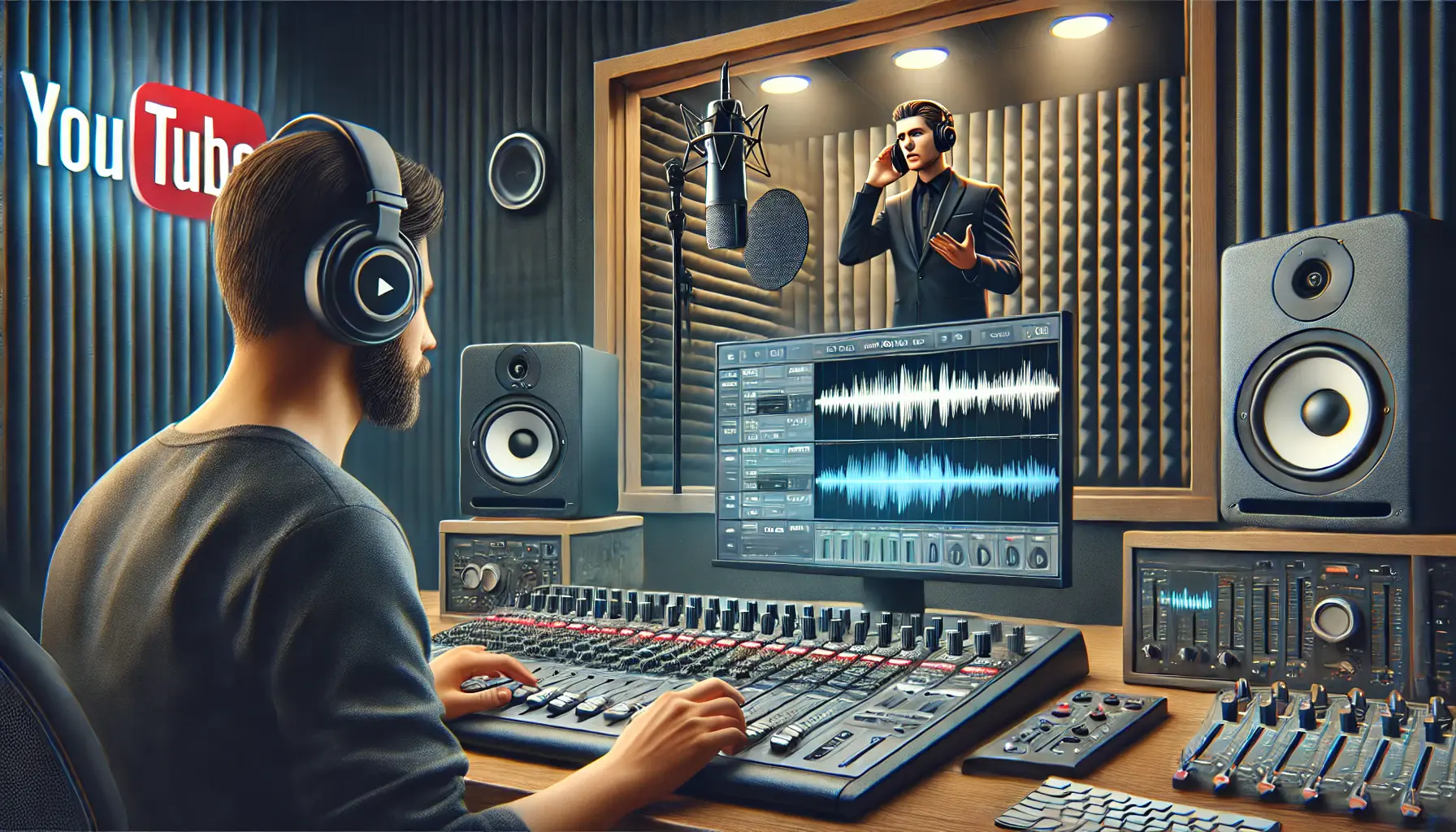
Mastering voiceover techniques for creating successful YouTube ads.
Mastering Voiceover Techniques for YouTube Ad Success
Voiceovers are a powerful tool that can make or break the effectiveness of your YouTube ads.
By mastering key voiceover techniques and utilizing the right tools, you can create ads that captivate your audience, communicate your message clearly, and drive meaningful results.
Let’s recap the essential points covered in this article to help you maximize the potential of voiceovers in your advertising campaigns.
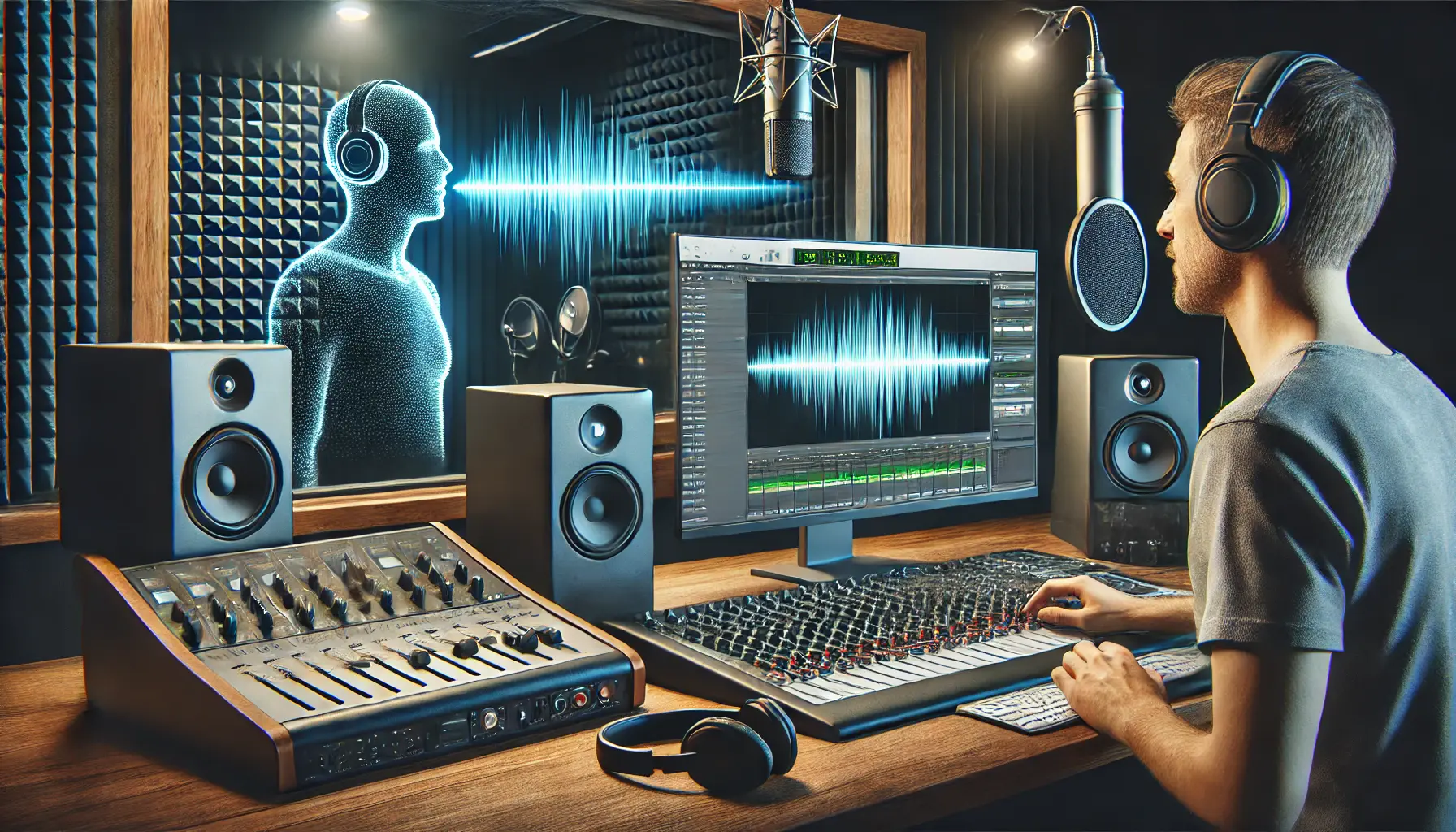
The role of voiceovers in enhancing the impact of YouTube ads.
The Role of Voiceovers in Impactful YouTube Ads
Voiceovers fill in the gap between visuals and what your audience is trying to perceive.
They improve engagement, bring emotional resonance, and communicate your brand identity effectively.
A strong voiceover will ensure your message gets heard amidst the digital noise.
Timing, in fact, is everything when it comes to running a high-impact ad.
From how to write a script and perfect your inflection to maintaining a conversational tone, these methods will greatly improve your ads.
Remember to:
- Write scripts that fit your brand voice and audience preferences.
- Use pauses and strategic intonation to emphasize critical points.
- Keep your delivery clear and relatable with a natural, conversational tone.

Combining professional tools and skilled talent for voiceover success.
Leveraging Tools and Talent
Professional-grade tools and skilled voice actors are crucial for creating polished voiceovers.
Software like Audacity or Adobe Audition can refine your recordings, while platforms such as Voices.com and Fiverr connect you with experienced talent.
Investing in high-quality microphones and accessories further enhances the production value of your ads.
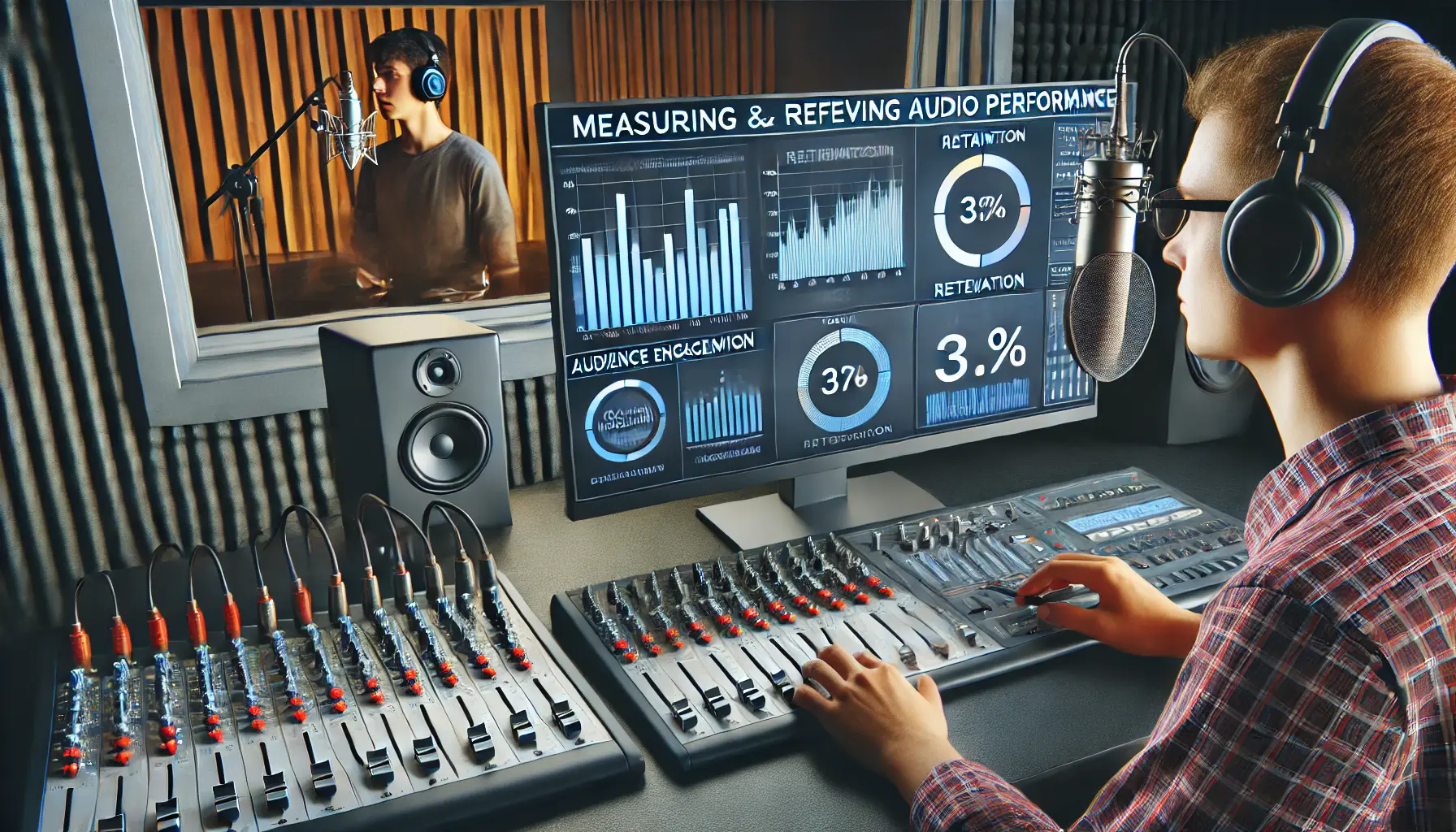
Using performance data to refine and optimize voiceover quality.
Measuring and Refining Performance
To ensure your voiceovers achieve their intended impact, track key performance metrics such as View-Through Rate (VTR), Click-Through Rate (CTR), and audience retention.
Use A/B testing to identify the most effective voiceover styles, and incorporate viewer feedback to fine-tune your approach.
Learning from real-life case studies can provide additional insights into strategies that work.
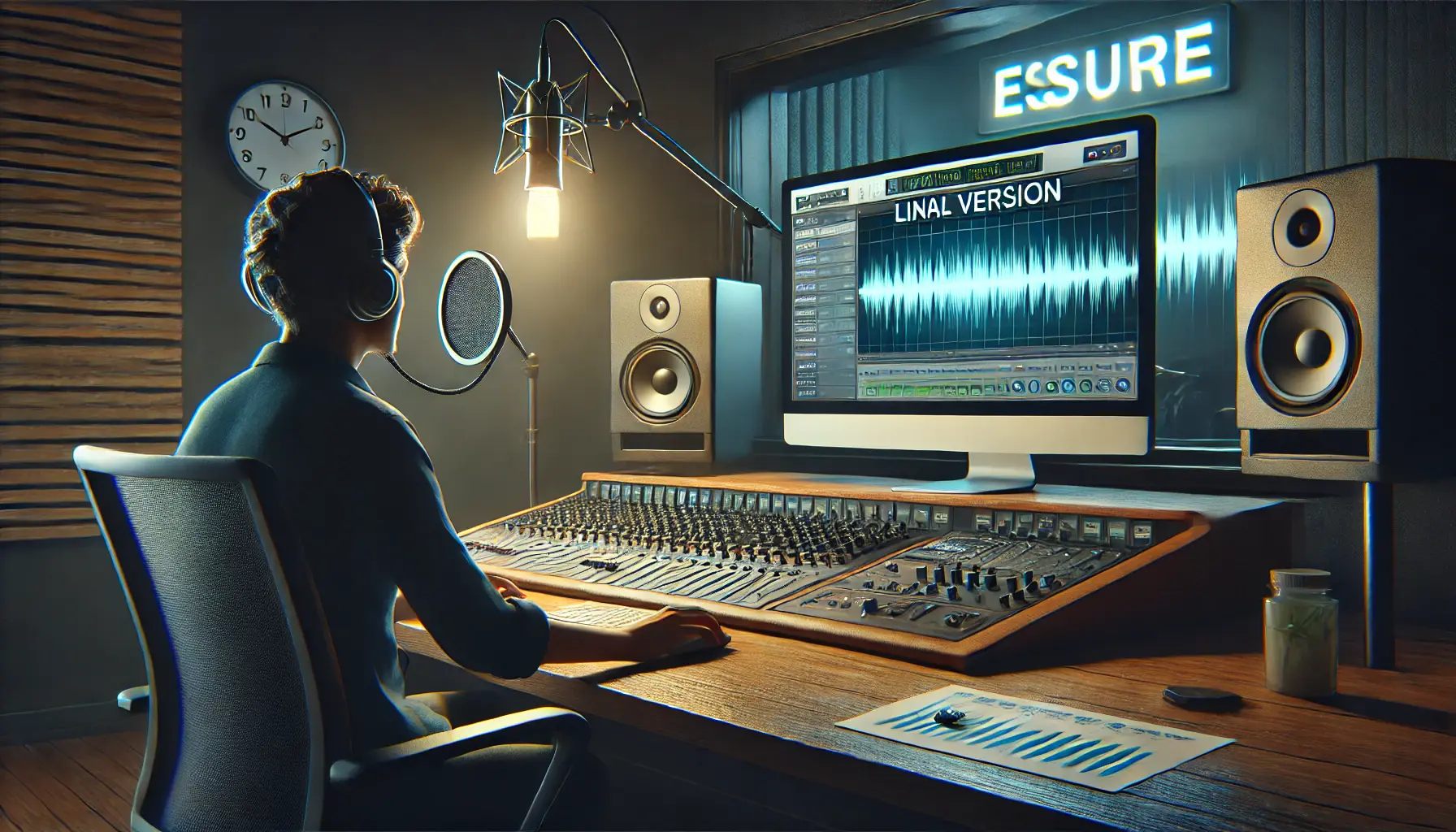
Finalizing the voiceover recording with last adjustments before completion.
Final Thoughts
Mastering voiceover techniques for YouTube ads is not just about creating captivating audio but about building a meaningful connection with your audience.
Creativity, technology, and data-driven insights come together to create a voiceover that leaves a mark.
Be it targeting local markets or audiences around the world, these strategies will ensure your ads stand out and achieve measurable success.
Effective voiceovers combine creativity, technology, and data insights to engage audiences and drive results. Continuous improvement ensures your ads stand out in a competitive digital landscape.
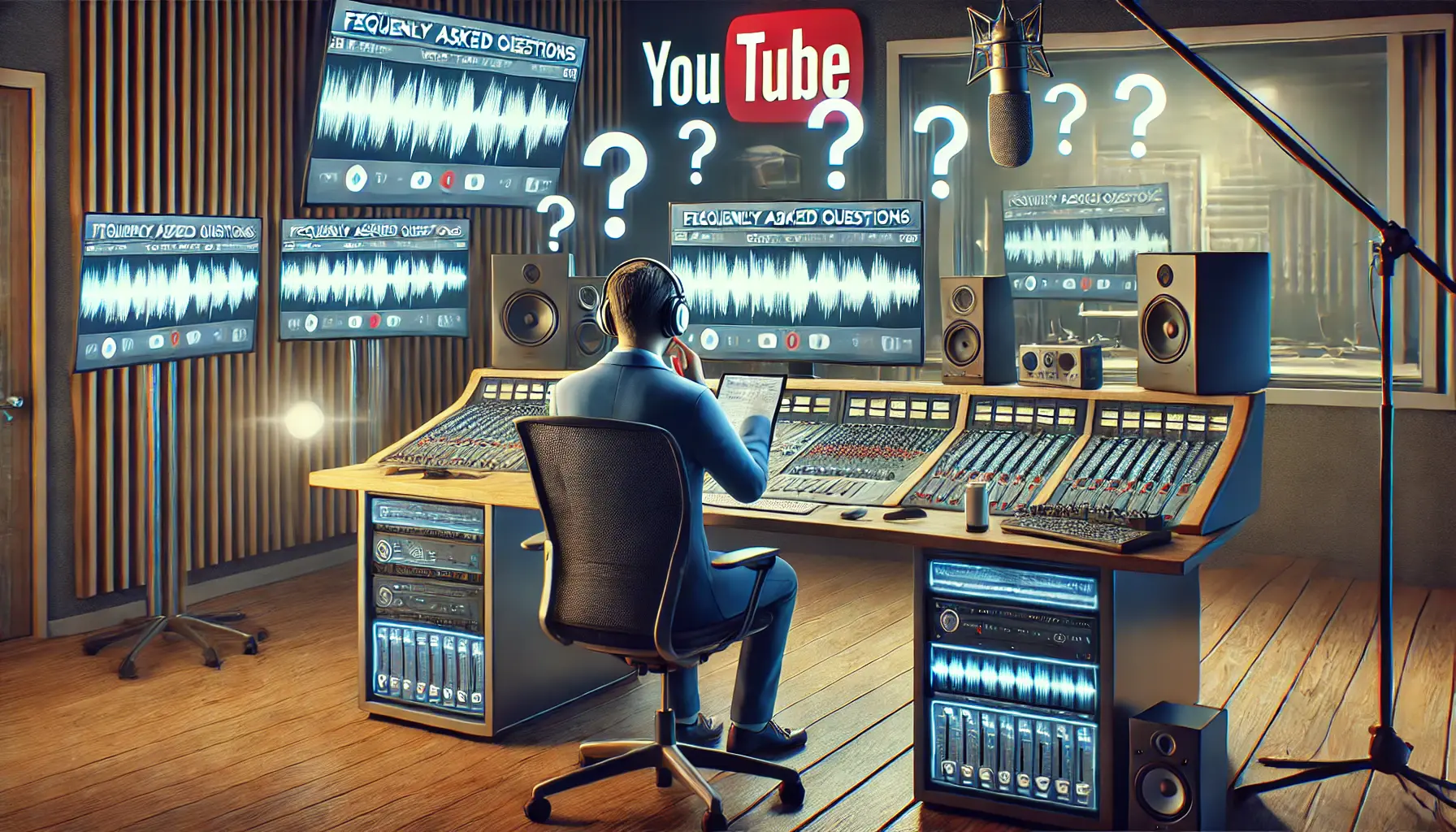
Addressing frequently asked questions about voiceover techniques for YouTube ads.
Your campaigns can be managed by an agency specialized in Google Ads, check out our service page.
Frequently Asked Questions About Voiceover Techniques for YouTube Ads
Voiceovers play a crucial role in enhancing the effectiveness of YouTube ads.
Below are some frequently asked questions and concise answers to help you better understand voiceover techniques and their application in creating impactful ads.
Voiceovers enhance engagement, deliver emotional resonance, and communicate your brand’s message effectively.
They ensure the audience remains connected to the ad, even amidst the distractions of a crowded digital landscape.
Select a voice that resonates with your target audience.
Consider tone, style, and demographics to ensure the voice aligns with your brand identity and the message you wish to convey.
Professional voiceovers require clarity, tone balance, proper pacing, and emotional connection.
Investing in quality scripts, equipment, and professional talent ensures your voiceover stands out and enhances the ad’s impact.
AI tools are cost-effective and efficient for simple projects, but they lack the emotional depth and authenticity that human voice actors bring, making them less ideal for emotionally driven or high-impact ads.
Essential equipment includes a good microphone, such as the Shure SM7B, pop filtersDevices used in recording to reduce plosive sounds caused by fast-moving air. to reduce plosives, and audio interfacesHardware devices that connect microphones and other audio equipment to a computer for recording and playback. like the Focusrite Scarlett series to ensure clear, distortion-free recordings.
Track key metrics such as View-Through Rate (VTR), Click-Through Rate (CTR), and audience retention.
These insights reveal how well your voiceover resonates and drives engagement with viewers.
A/B testing helps determine the most effective voiceover style, tone, and pacing by comparing variations.
It provides actionable insights to optimize your ad for maximum audience impact.
Audience feedback offers direct insights into the strengths and weaknesses of your voiceover.
It helps refine delivery, tone, and messaging to align better with audience expectations.
While not mandatory, professional voice actors add credibility and polish to your ads.
They ensure clarity, proper tone, and emotional connection, which are critical for engaging viewers effectively.

